CORE Command Player's Handbook Deluxe Edition by Doresh
The CORE Command Universe
Original SA post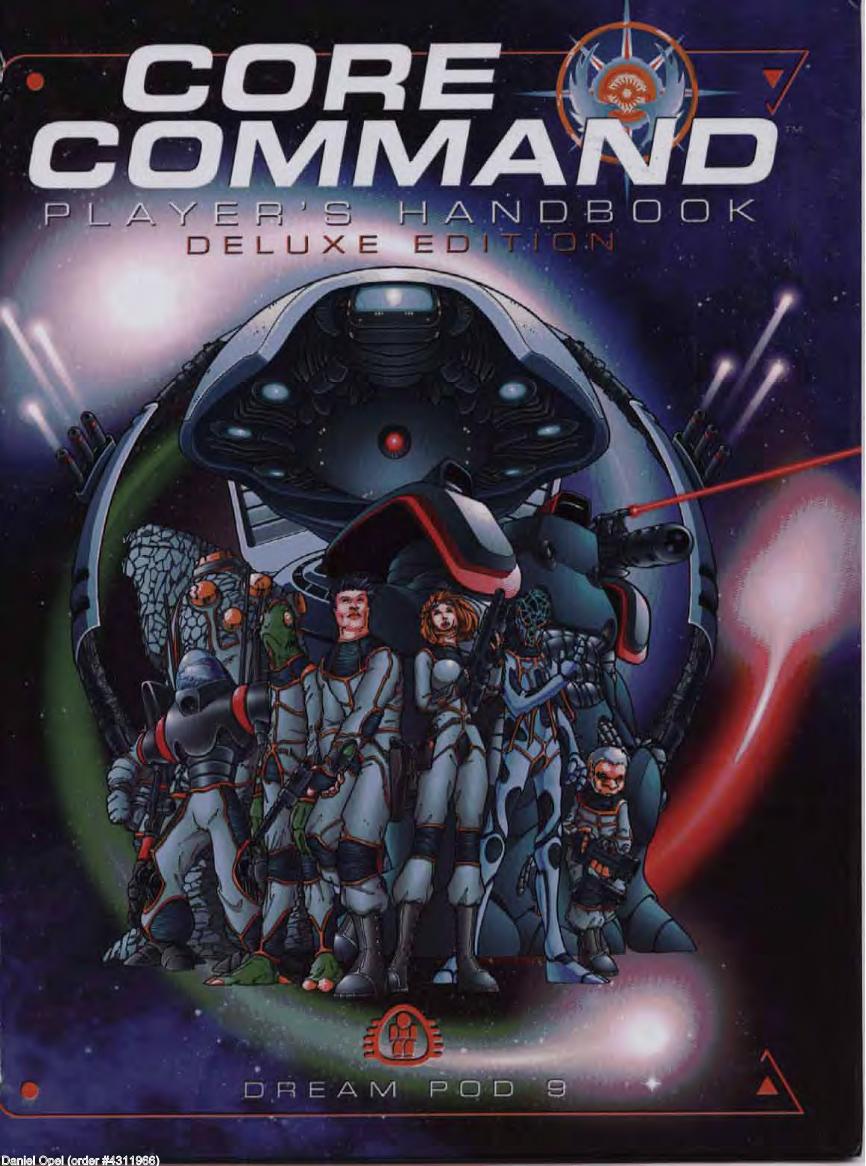
quote:
"Any sufficiently advanced technology is indistinguishable from magic."
-- Arthur C. Clarke
-
Blessed Unconsciousness
: Pay a point to play dead so the bad guys won't kill you.
-
Creative Stunt
: Pull a MacGuyver.
-
Lucky Break
: Single-use Plot Armor.
-
Mimic Skill
: Pull out a single-use skill from your buttocks.
-
Raw
: Anything that doesn't support life, aside from maybe a couple organisms. Also includes planets that used to support life before becoming FUBAR.
-
Genesis
: Any planet that does support life, but doesn't contain sentient lifeforms. Very popular for colonisation and terraforming.
-
Primitive
: Genesis planets with primitive sentient life. And of course, there's a Prime Directive.
-
Post-Singularity
: Basically a planet whose entire population has turned into the Borg collective. The only known planet of this type is Fractal, making it not only planet-sized, but an actual planet. It is unknown on whether it has figured out the question to life, the universe and everything by now.
-
Stasis
: A planet where technological advancement has halted, preventing the population from reaching Singularity status.
-
Dreamstate
: Automated worlds whose population has passed Singularity (so it's technically Post-Singularity, too?) and are spending all their vast, god-like powers hanging out in the Matrix.
-
Exotic
: Everything else. Includes artificial constructs like Dyson spheres.
-
Spiral
: The galaxy formerly known as the Milky Way.
-
Doradis
: The galaxy formerly known as the Larger Magellan Cloud.
-
Tucanae
: The galaxy formerly known as the Smaller Magellan Cloud.
-
Andromedea
: The galaxy formerly known as M31.
-
Trianguli
: The galaxy formerly known as M33.
 ). Thankfully, the black holes that can be found at the center of every galaxy have been converted into hyper-tunnel gates long ago by Convenient Ancient Precursor Race, which allow quick access between each other, though opening one requires you to throw in a white dwarf star. Then again, the fastest spaceships - the Galactic Express - also eat up a star to power their FTL drive. Being an environmentalist in the far future must suck.
). Thankfully, the black holes that can be found at the center of every galaxy have been converted into hyper-tunnel gates long ago by Convenient Ancient Precursor Race, which allow quick access between each other, though opening one requires you to throw in a white dwarf star. Then again, the fastest spaceships - the Galactic Express - also eat up a star to power their FTL drive. Being an environmentalist in the far future must suck.
-
Authe
: Desertworld. Also has a sizable population of the Sanroks (alien rock dudes).
-
Bransma
: Moonworld.
-
Embra
: Racingworld. Also Anarchyworld as nobody ever bothered to define proper borders.
-
Gaier
: Tremorworld.
-
Idar
: Iceworld.
-
Lant
: Cliffworld.
-
Sanst
: Waterworld.
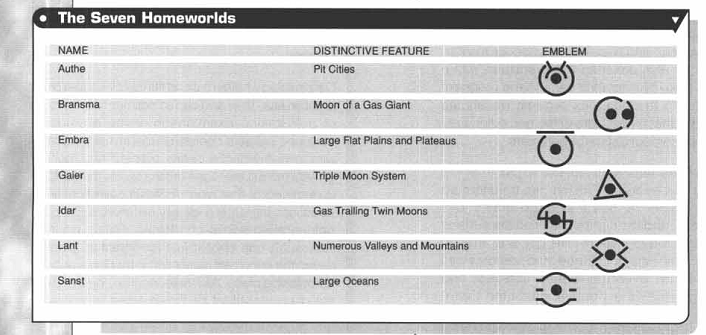
Character Design
Original SA post CORE Command Player's Handbook Deluxe Edition
Chapter 2: Character Design
This chapter starts of with some more desparately needed setting information. We get another paragraph worth of "They're Starfleet, yo" and then get a bit of information about how CORE Command recruits people. They mostly visit just about every developed planet every couple years to look for candidates. Sometimes, they find promising candidates in uncivilized worlds, which they approach with an offer to join them, at the cost of never being allowed to return. So despite having a Prime Directive going on, they're perfectly happy to thin out the ranks of bright, exceptional individuals who would most likely play a large role in the civilization's natural development. That's a bit questionable if you ask me.
We also get another confirmation that CORE Command train cadets in tutorial planets, including some first Holodeck sessions to weed out the pansies.
The chapter also does the same thing Jovian Chronicles did, in that it repeats the rough chargen steps from the core book (which is a bit redundant if you ask me). Like JC, it's of course on the cinematic power level.
This might be a good point to mention how SilCORE's set of 10 attributes and 5 derives attributes might be seen as 90's overkill. But fear not! The core book actually has a few guidelines to reduce the clutter. The options are "Just use d20 attributes", "cut the amount of stats in half by averaging similar stats" and "borrow from the Tri-Stat system, with Psyche either being removed entirely or hanging along for magic and stuff". Strangely, CORE Command suggest none of these options, even though a light-hearted space opera romp would probably benefit from fewer stats to keep track of.
CORE Command does however use two other optional rules: Levels (which is really just there so one can eyeball how many skill points you've got) which exist in-game as "Grades" you have to get promoted to, and the so called "Detailed Experience model" which just multiplies all XP costs and normal XP awards by 1000 so the GM can hand out smaller awards.
Strangely, the OGL conversion notes straight up tell you that it's using D&D, even though every other SilCORE line (at least AFAIK) uses d20 Modern. Said notes also mention which agent types relate to which D&D class. Note that there are no profession templates in this (again, unlike every other SilCORE Player's Handbook), making it a bit hard to pinpoint what exactly an agent is supposed to be able to do. Also a weird departure form DP9's usual "Here are some almost complete templates you can use directly as NPCs"-philosphy.
(At least unlike JC, this book actually mentions how everyone can take Perks and Flaws.)
Oh well, now onto the Races:
Humans
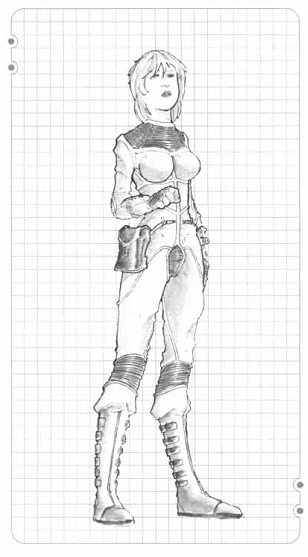
Plain humans, of course being the most important member of CORE and playing the role of curious explorers and neutral diplomats we like to give yourselves in more optimistic sci-fi settings. There are still your egocentric warmongers, but those are only found in evil space empires that are not part of CORE.
For some reason, they mention that a human's skin color depends on how close their world is to the galactic center. Who knew Africans are actually immigrants from the Milky Way's core?
For some other reason, most human civilizations dislike obvious implants because they want to look "natural", but they have no issues with tattoos and piercings.
Hailing from the Spiral galaxy, humans can now be found in all five galaxies. As none of the current humans actually originate from Earth, nobody has ever heard about this mostly harmless planet.
(I think I'll skip further mentioning who lives in which galaxies, seeing they're not fleshed out at all.)
Rules-wise, humans are unsurprisingly your default choice. They do however get a freebie in that they all start out with the lowest level in the Quantek Skill, which I assume is Space Magic.
Their statblock (as well as everyone else's) mentions how they "have access to all the professions (unless specifically counter-indicated)". Again, there are no professions.
Cyren
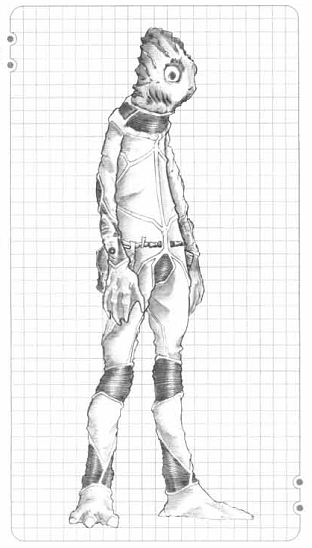
Very adaptive Amphibians (who require symbiotic corals to breathe water) who have been around space for over half a million years, thanks to the help of the Orb-Shakra which we'll get to shortly. They obviously prefer colonizing worlds with lots of water and temperate climate.
Cyrens in general tend to be brooding, and they find technology so fascinating that their scientists and engineers are essentially their clergy. So they're emo techpirests.
Cyrens have better Perception and Agility than humans, but a lower Build and a very crappy Psyche rating, making them a bit unstable. They can also swim very fast, though there are no rules about how those corals work.
Sanrok (or "Sandrock", as one table calls them)
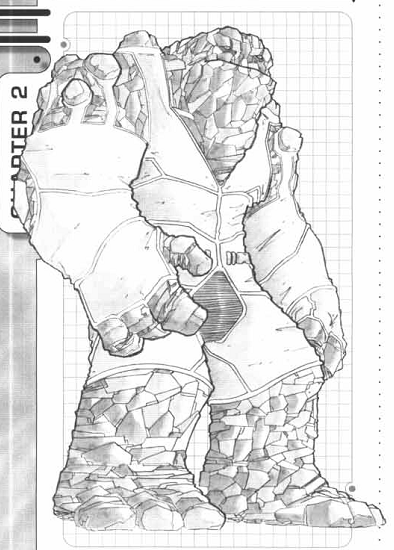
Imagine Ben "The Thing" Grimm as an alien race. They're the newcomers of the main races, only having access to FTL drives since a couple centuries. Other races think these guys are pretty cold and emotionless, but that's only because rock skin make for the perfect poker face. They're actually pretty nice dudes.
Because their skin grows quickly to counter their homeworld's sand storms, they have to frequently grind off the outer layer or they'll eventually turn into statues.
Naturally, they can have quite high physical stats, but are sluggish. They also have low Psyche like the Cyrens. They can easily shrug of high gravity up to 2 g, and for some reason, they can crawl just as fast as they walk.
Orb-Shakra
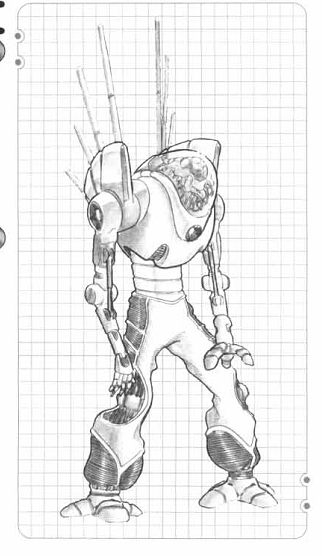
One of the most intelligent races, these guys have been around for several million years. They live as some sort of pseudo-hivemind where knowledge and memories can be shared, but everyone still has its own personality.
As they are essentially gross jellyfish that can only survive in the lowest of gravities, they tend to stay inside humanoid servoshells. I guess they're a bit like Vorlons in that regard, but they're far nicer mentor dudes and much more likely to party hard (they have a thing for sensations and excitement).
Orb-Shakra trade high mental for slighty lowish physical attributes. They don't pilot their servoshells like a man-sized mech built with the vehicle creation rules. The servoshell is instead lumped into their physical attributes. Makes it easy I guess, but will become a bit jarring when we get to actual robots.
Proteans
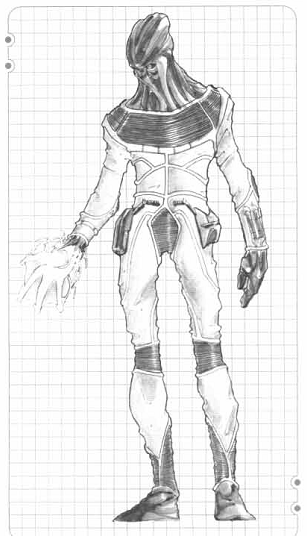
Another newcomer race (though not as "new" as the Sanroks), these guys are shy Shapeshifters whose first venture into space had them get scammed by the Murans. At least they got some organic data sockets out of that deal with which they can store personalities and abilities for more efficient shapeshifting. Not sure why they need that, seeing how they're shy and peaceful.
They can have very high Appearance (hopefully because of their shapeshifting; their actual faces are a bit featureless), high knowledge, slightly low Build, and very low Willpower, making them good targets for brainwashing. They can take on the appearance of any humanoid that isn't noticably larger or smaller. They can hold this form for several hours. The fluff claims they can hold it even longer at the risk of getting insane, but there's nothing in the rules to back that up. Also no rules for those data sockets.
Dimni
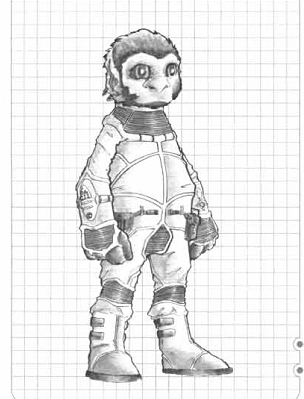
Nomadic Kremlin merchant and tech dudes. That's about it.
Stat-wise, they're very creative, but of course a bit lacking in the physical department. They get the "Mechanical Touch" (actually called "Machine Touch") Perk for free and can't take its opposite "Mechanical Ineptitude" Flaw (spelled correctly this time).
Muran
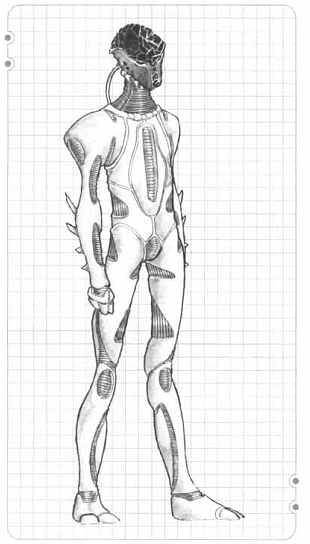
Another very old alien race, these guys are xenophobes. They like bragging with their superior technology, but are slowly getting paranoid over their own stagnation.
Similar to the Orb-Shakra, they have high mental and low physical attributes.
Mi-Compilers
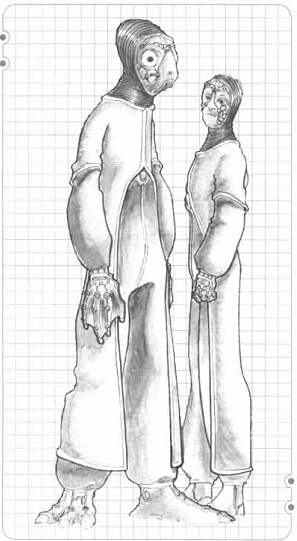
Fractal's peaceful hybrid crew. Aside from human hybrids, there are also hybrids of Cyrens, Murans and Dimnis around, though they are different enough from their original race as to be lumped together into its own thing. Aside from the humans, everyone is a bit creaped out about their Mi-counterpart. You'd think the humans would think the same, seeing how a lot don't seem to like implants.
Similar to Murans, they have high mental and low physical attributes, with their Creativity taking a nosedive because they rely too much on Fractal's database and their own implants (which might come up later in the equipment chapter, but I'm not counting on it). They need to take at least 2 levels in the Quantek skill (they don't get any rans for free like humans).
The OGL stats give most of these races Low-light Vision and racial skill bonuses, something they don't have in SilCORE. Probably because it is mandated by D&D law that all non-humans must have these abilities..
Artificial Beings
Unlike the Orb-Shakra's servoshell, robots actually are build with the vehicle rules. As this book predates the SilCORE errata that introduced the Infantry Perk (allowing small vehicles to mostly operate like people and require weapons to have the Anti-Infantry Perk to not suffer a hit penalty against them), they move differently, have different movement-related combat modifiers, are more resistant against automatic fire, and are somehow easier to hit with a tank gun despite being human-sized. Playing a robot however has its merits, seing how you have 2 base actions instead of 1 (anyone can get himself more, but that causes a penalty to all rolls) and are generally much, much sturdier than fleshlings.
As these small "vehicles" still operate on the vehicle-scale (aka their armor and weapon damage is multiplied by 10 when dealing with people), there can be quite a jump in effectiveness at the lower end of the spectrum. The main book recommends using fractional armor and damage values, which this book does not do.
Funnily enough, since none of their "Fists" weapons have the Anti-Infantry Perk, they're pretty bad at punching dudes.
Anyhow, intelligent robots or rather their AIs (be they alien-made or aliens themselves) have been quite well integrated into CORE society. They even wear clothes and stuff. No paranoia about them overthrowing their masters to be found anywhere, which is a nice change of pace.
Servoshell & Cyber-Servant
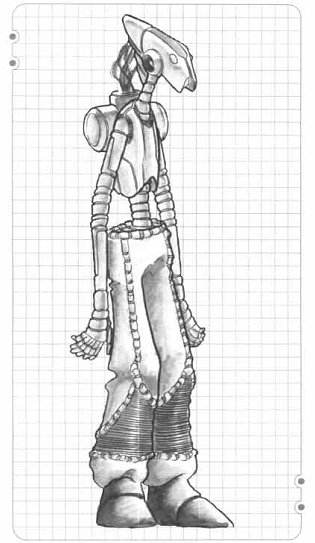
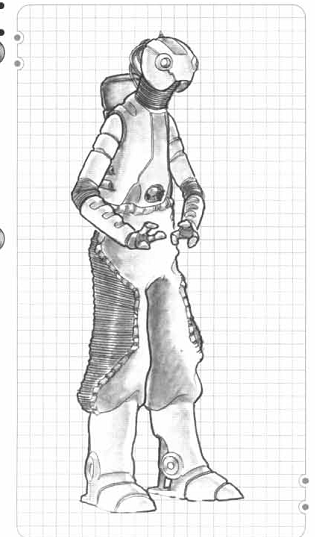
These are your most basic robots, with the first being your general all-purpose model, while the Cyber-Servants are your assistants and protocol droids, making them smarter than the former, but with a noticably weaker body.
Loading Drone
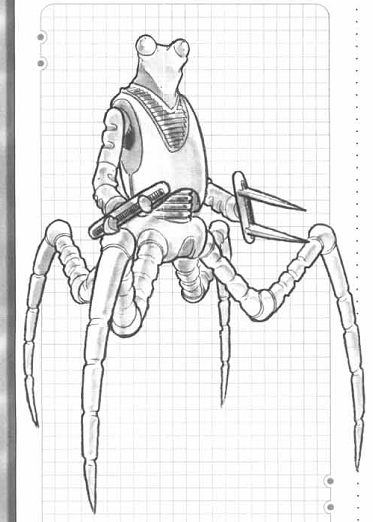
I'm not quite sure what this guy is even doing here. This is a very specific model from an evil alien race, and its AI is considered Dumb, making it a mindless construct that can only follow simple orders. There have been cases of sentien AIs in such a body, but this only happens as a form of punishment or when the AIs does it out of boredom.
Combat Drone
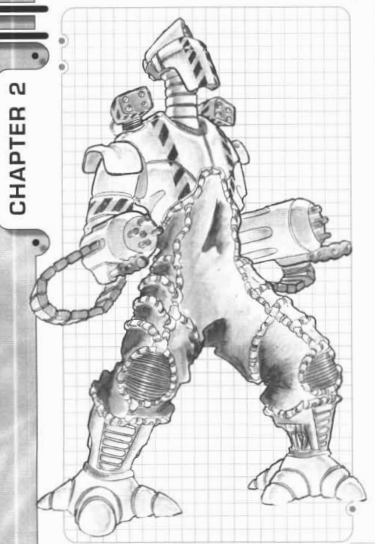
Another mindless drone, this lovely fellow is sturdy enough to be impervious to most personal weapons, and its missiles can be a death sentence for PCs. They're Area of Effect, able to cover a 50 m radius (the smallest AoE a vehicle weapon can have) with an attack that even when avoided will still do its base Damage Multiplier in damage, which for this missile is 10, aka 100 on the personal scale (enough to heavily wound or outright kill all but the most heavily armored soldier). Things get even uglier when the drone uses the missile's high rate of fire, beefing up the area range or dealing even more damage. And he can alpha strike with all of his 8 missiles in one turn.
Suffice to say, unless armor in this setting is very high, this guy is a TPK waiting to happen. The OGL version deals 4d6 damage for low-level slaying.
Its second weapon are the weapon arms, described as "Gun Clusters" that feature both needleguns and plasma repeaters depending on range. The stat block only has one attack mode for this.
Honestly these two drones should belong in a bestiary section.
Now on to the real stars here: Recorded Heroes. These are robotic bodies housing the brain pattern of a dead CORE agent. Said patterns are stored in a biomechanical circuitry, and the process of extracting the patterns is so damaging to the brain tissue that it is only done with dying agents. So there are no frequent backups? A shame, would be funny for an agent to be declared MIA, only for him to return months later and find himself some vastly superior robotic clone.
And for some reason, Recorded Heroes wear clothing only for ceremonial purposes. Oh well, at least once they have their brain patterns extracted, there's nothing stopping the new Recorded Hero from making backups, making them effectively immortal.
All Recorded Heroes come with an antigrav backpack allowing for flight, which is always useful. Strangely, the SilCORE stat block does not include space flight, but the OGL block does (I guess that movement mode is supposed to be used for both?). They don't come with any built-in weapons aside from their fists and a force screen for most models. For ranged weapons, they have to get handheld stuff or modify their body. They also have a Dumb support Computer as part of their "crew", giving them an extra action at the Computer's most likely lower skill level, so leave that one to fire AoE attacks.
Their OGL stats make them very overkill for low-level challenges, what with their 30+ STR and a Hardness between 10 and 20. Then again, they're so not supposed to be greenhorns.
Recorded Hero Type I
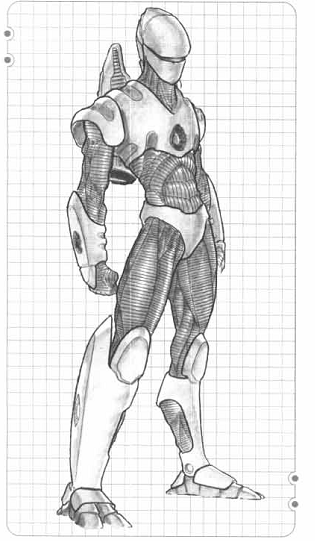
Anyone remember Rise of the Robots?
This is the scout/ninja model, the only one without a force screen. Their Armor value of 10 already makes them as durable as a light Gear like the Cheetah. Personal firearms won't do it here, and heavier guns will mostly suffer thanks to a combination of their own low accuracy and the Maneuver bonus of this robot body.
Their fists have a Damage Multiplier of 5, aka 50 on personal-scale. They will crush your head like watermelon in a fistfight - though without the Anti-Infantry Perk, landing a hit is a bit hard for them.
This model is also the only time Recorded Heroes get a typical Grade value, in this case 20. Eyeballing things a bit with the skill improvement chart and the OGL conversion rules, you can have most of your important skills at level 7 (out of a possible 10) and be considered a 19th level character in d20 with this Grade. You're into one hell of a show when the Type I cavalry arrives.
Then again, this body is also handed out to Recorded Hero AIs who "wish to serve extensively in the field", so they can potentially be less awesome.
Recorded Hero Type II
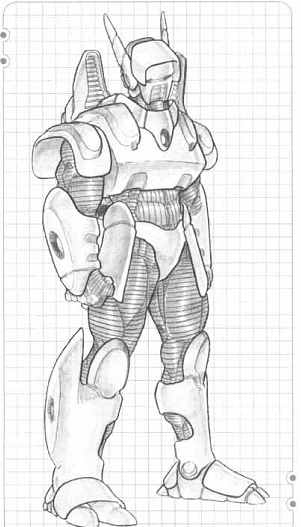
This is the balanced model, with advanced comm and sensor systems. Their armor is obviously higher, making them as durable as a Hunter/Jäger Gear, and their force field makes it even less likey for personal-scale weapons to have any kind of effect. Funnily, their fists deal just as much damage as the previous model, and their force screen has no flaw that makes it suck at being used offensively, so I guess that's their main melee attack.
The text claims they have multiple hardpoints, but there's none of that in the stats. I would suspect this is because a Hardpoint needs a maximum Threat Value for the weapon mounted on it, and the writers don't believe in Threat Values. So slap anything on the GM let's you get away with!
Recorded Hero Type III
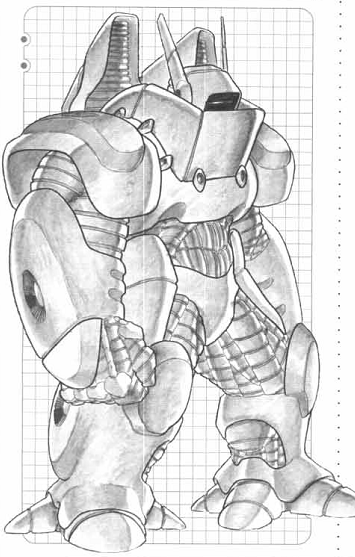
For those who ever wanted to play a Gear without the pilot. These guys are slow, but durable like the toughest Gears, though I would put my money on the Type II because a negative Maneuver modifier is a bit of a disadvantage. This model also talks about non-existing hardpoints, and its gigantic fists also only deal as much damage as the Type I's. A boxing match between Type IIIs can go on forever.
That's about it. The alien selection is a bit bland (maybe aside from the Orb-Shakras), though those Recorded Heroes are certainly something. They can easily soak up stuff like the Combat Drone's missile massacre and are overall the best player option (unless there's some fantastical equipment they can't use for some reason). I can certainly see longer CORE Command campaigns (if such a thing exists) having the players constantly ask the GM when they're PCs are considered important enough to be put on the Recorded Hero candidate list so they can get themselves conveniently killed. Being an immortal cyber ninja or mini mech in a society that has no problems with robots is a pure win-win situation.
Next up : The equipment section. As most of this comes from that one Armory book, this chapter is over 70 pages long, so I'll most likely only cover the highlights. To spoiler a bit: I think the term "rocket tag" might not be enough for this game.
Tools Of The Trade
Original SA post
CORE Command Player's Handbook Deluxe Edition

Chapter 3: Tools Of The Trade
Before this monster of a chapter starts with all the fun space toys, we get another attempt to flesh out the hint of a setting that is the CORE universe. The current state of technology brought by Fractal is very advanced and clean, going so deep into the molecular level that the untrained eye can't differentiate a solid block of plastic from a computer. "Quantek" is the fanciest - and least understood - example of this technology, which is also responsible for "agrav" aka anti-gravity devices.
And of course, every door is more than happy to open itself for you.
There's also a design notes sidebar about how technobabble can be used to add "atmosphere and ambience" to a game session, so you better get ready to interpolate that quantek flux.
We get some examples on the next page, which tells about common energy sources like antimat cores, matter conversion furnaces, vacuum energy extractors and singularity engines (because using a black hole in your generator or power plant can never go wrong).
Using quantek devices requires an interface implant, which can be quickly put under your head's skin (I supppose you use a drill on Sanroks). Handling more devices requires more interfaces, which is handled by the Complexity rating of ones Quantek skill, giving you up to 16 slots of quantek goodness.
I would also like to point out that there's no paragraph or short section dedicated to actually describing the skill in the usual RPG skill way. I'm not even sure if the skill does anything else besides providing you with quantek slots (making the actual skill rank a bit pointless if all you need is the complexity, which you raise separately). There's an entry in the index of the "Quantek Interface Skill" (which I guess is the extended name of the skill), but this leads again only to this mention.
A really handy use for quantek is in making weapon implants. Normal weapons (not the so-called buster guns we'll get to later) can be miniaturized into small polymer blocks that are attached to the bones of either your hand, forearms or head and which you can reload with syringes. When needed, they poke out a very thin barrel or blade out of the skin. So not only can you have Wolverine Claws, but also Wolverine
Guns
. Pretty expensive - the weapon's cost is multiplied by 1,000 - but at least you don't have to worry about encumbrance at all, as these blocks don't really weight anything.
Rules of this procedure are a bit wuzzy. The book first tells you that this can only be done with weapons from the "basic small arms section" (which doesn't exist), but then follows with how good your quantek complexity rating needs to be in order to implant rifles and heavy weapons. The latter can only put into your forearms, so while you can put a sniper rifle into your pinky, you can't put a chaingun into your nose.
The power source of a quantek devices gets recharged by its user's metabolism, so they can only stay active for a while (depending on your Stamina). Not sure if this is true for the above weapons.
Stuff you can quantekify include basic equipment within reasons (you can't fart out tents), agrav capabilities (you get an anti-gravity skeleton to go along with your Wolverine Guns), a force screen and a friggin' tractor beam. Most of these can be improved by having them take up more slots.
This stuff actually sounds pretty rad. It's like roleplaying in the far future of the Deus Ex setting.
(He said, preparing for disappointment at the execution. For starters, it's not really spelled out whether Recorded Heroes or other robots can benefit from these upgrades. Not that they really need to.)
Personal Equipment
There are a crapton of different curriencies in the Five Galaxies, but most accept the universal, digital-only Credit. Money is however only used for rare and special goods and services, as all the basic stuff is usually provided for free or just one autofac (which I guess is like a hybrid between a Star Trek replicator and a 3D printer) order away.
There another OGL sidebar about how even SilCORE players can benefit from the OGL writeups because they provide a bit more detail (aka "they mention the kind of damage dealt"). OGL is also once written as "PGL".
A lot of the stuff in this section is pretty standard sci-fi stuff, but more advanced. So your typical rope is 500 m long as as thin as a hair (so you can roll it all into a handy ball) and is strong enough to lift a couple tons.
Memeware
This has sadly nothing to do with internet memes, but is probably just short for "memory hardware" or something. It's an implant made out of cloned tissue from the receiver that can store information, giving you instant access to skills you didn't have before (though it's sadly limited to knowledge-based skills. No instant kung-fu for you.). Head trauma and possible other events can lead to "Memory Blur", where the brain thinks the memeware is part of its own memory storage, cluttering it with actual memories. Removing the implant after this happening is obviously not a good idea.
And hey, we actually get some information on those data sockets the Proteans use. They work similar to memeware, but it's less advanced and therefore more obvious to spot.
Staze Node
Stazes are described as space-time continuum bubbles where the laws of time and physics just don't exist. A staze node is an implant with a compressed staze for CORE agents of at least Grade 5. This node takes advantage of the staze's "Gently caress physics"-mentality to use it as an indestructable orb to conserve CORE agents that are about to die. You still need your fellow buddies to pick you up and get you out of the staze, but it's a price worth to pay if you want to survive
anything
. Though it does rule out the possibility of becoming a Recorded Hero.
Orbs
The companion of most agents. They are robotic exposition faries who despite their name don't need to be orb-shaped. Depending on whether or not its armor is vehicle-scale, it is much more durable than its 2 HP OGL counterpart.
Gun Harness
A pretty weird kind of item, a saddle-shaped harness that you put on your shoulder to mount a personal weapon (preferrably a smart gun), in case you want to pretend that you're a mech or something. The OGL version lets you fire a small arm as a free action, which I'm sure can be exploited.
Resonance Field Inductor
A crown that makes you more intelligent at the risk fo brain damage. So rare it's pretty much a D&D-esque artifact.
Power-board
It's a hoverboard, reaching up to 165 meters per round. Pretty tubular.
Slick-Suit
It's a futuristic gimp suit made out of a frictionless material (the palms and soles are roughened so you can actually walk and grab stuff) that supposedly makes the wearer "nearly immune to any sort of entangling or grappling attack", which in game terms translates to a +1 on grapple-related Defense rolls (+2 circumstance bonus to grapple checks in OGL). A bit underwhelming, is all I'm saying.
Suspension Rod
It's a straight copy of D&D's immovable rod, working exactly like the OGL version except that it runs out of juice after 12 hours and can apparently not be pushed with enough strength.
TechGlasses
Google glass wished it came with this baby's 50 Exabytes of storage space.
Vehicles
Here are some non-space vehicles: The agrav sled (a hoverbike with wings), the agrav transport (think The 5th Element hovercars with bigger thrusters), and the battlepod, a hovercar with lots and lots of guns.
Weapons and Armor
The weapons section starts of with a melee weapons table that is a shortened copy of the one seen in Jovian Chronicles. The vibro-blades are still called "Hummer-" in the table, but the text calls them "cutter blades".
The ranged weapons table lumps all the different tables from JC into one big one (except for heavy weapons, they have their own) and removes the setting-specific weapons (aka everything without a generic name). Do people in the whateverth millenium still use 9mm revolvers and a 6mm carbine (both of which you can totally mount on your gun harness) ?
Oh well, now onto original stuff:
Armor
Personal armor continues with the "like Jovian Chronicles, but less"-copypasta approach, though we do get something new in the form of mercury armor.
Mercury armor is a nano-metal that can cover your entire body as a quicksilvery-layer of armor. It can regenerate itself (they've forgot to copy JC's armor damage rules, so this doesn't actually do anything) and can generate melee wepaons at the cost of a reduced armor rating. If you ever wanted to have a character pretending to be the T-1000, this is your chance!
The standard rules assume the mercury armor covers the whole body at the same strength, but there's an optional rule that allows you to shift points to different hit locations, though this will most likely only ever matter against called shots, as the rules don't have you roll for hit locations (though it might be even more useless depending on when you're actually allowed to shift the points around). Overall, it only has an average armor rating of 50, just like the strongest normal armor (though without the encumbrance). Not really enough to rival Recorded Heroes, unless you're really beefy.
The big flaw of mercury armor is that EMPs turn it into a puddle of useless nano-junk. You have to add EMP shield layers for that, though they don't work if you're creating melee weapons. They also add to encumbrance, so you might just be better off with normal armor.
The OGL version has the odd option of solidifying completely, granting you Hardness 20 at the cost of not being able to move at all. I think you might suffocate from that stunt.
There's an even more advanced version of this called "lightning armor", which uses force fields instead of nano-bots. This one has enough armor rating to give you the lower endurance of a Type I Recorded Hero, except that the Type I still wins out because of how damage thresholds work in this game (armor worn by characters don't scale very well for heavy and overkill damage thresholds).
EMP has no effect on this armor, but it can only absorb a certain amount of damage before shutting down.
Buster Guns
The most advanced weapons available for CORE agents. They're essentially gun-shaped stargates creating a miniature wormhole to the nearest compatible CORE vacuum energy generator (either from a ship or a HQ, with a range long enough to reacht a generator anywhere in a solar system and a bit beyond) inside their barrel to dish out absurd amounts of vehicle-scale damage (aka their damage is 10 times as high as just about every other personal weapon).
As they are highly dangerous weapons, only CORE agents have access to them, and they have to reach at least Grade 3 to prove their worth. Higher ranks allow you to pick up even more ridiculously overpowered buster guns.
-
Buster Handgun
: Its cute exterior (its barrel is almost non-existant) hides a mean punch. Its Damage Multiplier is 140, as high as the rocket launcher (the strongest conventional weapon in the book). You can easily wreck most civilian vehicles and go toe to toe with most Gears. Imagine the Noisy Cricket without the recoil, and you have a pretty good image of what this thing can do. The OGL version deals 3d10 damage with a crit range of (15-20)x2, which sounds a bit like overkill seeing how quickly you can get one. There's also some flavor text about how the handgun creates a blinding light, but there's no rules for this.
-
Buster Pistol
: At Grade 5, you get something that looks more like a proper pistol, boosting damage to 200 (4d10 in OGL, with a crit multiplier of x3), finaly allowing you to destroy
any
Gear.
-
Buster Assault Gun
: Reaching Grade 7 gives you access to what is essentially a double-barrel buster pistol. Damage stays the same, but you can fire both barrels as one action, and you can set both barrels to spread fire, halving damage but covering a 10° wide cone with delicious overkill.
-
Buster Package
: A support weapon available at Grade 9. It's what you get if you remove one barrel from the assault gun and strap on a grenade launcher and plasma gun. The latter is supposedly used for anti-infantry duty, but but the buster gun part is the superior choice in every way. Heck, if you don't need an indirect fire option, you can just dual-wield assault guns (or at least I think you can, the book doesn't say if you need two hands for one).
-
Buster Launcher
: If you absolutely need to kill
everything
, Grade 12 has you covered with this bazooka-shaped buster gun. It is the only one without unlimited ammo (5 shots, to be exact), but boy is it worth it. With a Damage Multiplier of 500 (10d10 OGL damage at the same broken (15-20)x3 crit range as almost every other buster gun), you can say goodbye to every exo-armor in Jovian Chronicles and every tank in Heavy Gear. Best of all, firing this thing creates an AoE effect around the barrel, from which the shooter is protected with a force field, dealing its base DM minus the distance in meters. Sure, you can easily kill all your comrades within half a kilometer from you, but you'll also kill everyone else. Or maybe the damage is centered on a cone area in front of the launcher. The wording is a bit unclear.
The fluff mentions how this weapon can hit targets in orbit, but the range is actually way too low for that.
Man, if the antagonists have weapons with that kind of damage output, we're looking at a new dimension of rocket tag combat. Not even Recorded Heroes can survive this madness.
Smart Guns
Weapon-shaped drones you slap onto your shoulder harness or a vehicle to target and shoot autonomously. There are 3 models: Snub gun, plasma launcher (or "plasma luncher", as the picture calls it) and firebreather (aka flamethrower). Only the plasma launcher can sorta keep up with buster guns, dealing as much damage as the buster handgun. The snub gun's quite alright though, as its more powerful than any personal weapon. It's a bit odd why these weapons aren't available as non-smart conventional weapons.
Thanks to their simple-minded AI, these guns can also talk. The Firebreather loves talking about cooking.
Gauntlet Equipment
Stuff you can slap onto your gauntlet to keep your hands free.
-
Plasma Gun
: Oh, so there
is
a non-smart version of the plasma launcher. It's of course smaller, so it only has a Damage Multiplier of 80 (still way better than anything conventional weapon short of a mortar or rocket launcher).
-
Force Shield
: A force screen you can use as a shield, mainly used to try to reduce incoming damage. Seeing the absurd damage values here, I doubt this shield can help much.
- Smart Mine : After being thrown, this mine floats in place, shooting out grenades in random directions until running out of grenades or being told to stop. This can actually come in handy when you have to move it and want to keep possible pursuers busy.
Guided Thrown Weapons
Shuriken and throwing knives can can correct their flight path for added accuracy and the option to reroll their attack. Doesn't seem to be too much of a point in getting these with all those wonderful overkill options available. Maybe if you're really, really have to hit someone without armor.
Sliver Blades
These are weapons using force screens to beef up their cutting ability, halving any armor rating to determine damage. Apart from the slicer (knuckledusters), you have a sliver knife, a sliver sword and a sliver catcher, a two-pronged weapon that can catch an opponent's blade.
Despite their armor-halving, their damage is too pitiful to do anything against heavily-armored foes and Recorded Heroes.
In OGL terms, these just beef up your threat range and critical damage multiplier.
Firesheet Blade
These weapons use a combination of plasma and force screens to either cover their blade in plasma or turn into flamethrowers. The models available are one-handed sword, two-handed sword and lance. Ranged weapons are still better but at least it gives melee users some AoE-capabilities.
Wizard Gloves
A pair of gloves giving you some freeform access to a force field projector. It comes with a limited pool of power you can use to create shields or slice/punch stuff up to 40 meters away, being able to deal more damage than every other melee weapon so far.
Terror Stick
A lot like these Klingon pain sticks, except they cause you to become fearful and passive.
Smart Sword
Imagine if one of those talking magical swords form D&D was able to adapt its blade with each hit to optimize damage against that specific target, increasing damage and pulling weapon Perks out of nowhere. As there is no limit to how much you can boost damage, you can order a simple-minded robot to keep poking the dirt, and he'll cleave the planet in two in a week or so.
Handguns
It becomes increasingly clear that the weapon tables copied from Jovian Chronicles are just supposed to be primitive weapons. Modern societies prefer blazer guns, pistol that fire Star Wars blaster bolts. One is even called "Blastergun".
Overall, they're much saner upgrades from the primitive weapon tables. Nothing a CORE agent would want to have, though - unless you want to earn style points by carrying the triple-barrelled multi-blazer.
Support Weapons
These are just buster packages with a buster-less combination of weapons, though they do have a slight advantage in that they can fire everything with one action.
Projectile Guns
Your futuristic shotguns, rifle and assault rifles. The only interesting bit are the pulser guns, whose projectiles are accelerated so fast the ignite (which sounds a bit railgun-y, though those ignite the air).
Gatling Weapons
Just some big weapons trading a high rate of fire with comparatively weaksauce damage. And you can even get out a higher rate of fire at the risk of overheating. Or you can just grab a buster assault gun.
Smart Guns
Didn't we already have this section? Oh, it's just a straight copy from that Armory book that even mentions how you can find the full rules in the Player's Handbook. Classy.
All of the 4 additional smart guns just take a huge cut in damage for increased range, though I guess this can be useful as it gives you a definite range edge over most buster guns (though having to deal with buster gun wielders is unlikely if you're a CORE agent).
Also, 2 of these weapons don't list how much ammo they can carry.
A-M Guns
These guns shoot out streams of matter and anti-matter combining at the target location. Strangely, they're in every way, shape and form inferior to blazer guns and futuristic projectile guns - and those don't have the risk of your anti-matter backpack exploding after taking damage and gently caressing you over like a BattleTech ammo explosion.
In fact, there are primitive revolvers and pistols that are better than these guns

(There is a mention on how the matter/anti-matter reaction creates an explosion, but there's no area of effect whatsoever. Oh well, at least the OGL versions have a 15-20 threat range.)
Field Artillery
Huge guns (though you can carry them easily thanks to their built-in agrav-platform) that can only just barely rival buster guns, but they have a larger range. Nothing about area of effect or indirect fire capabilities. You know, artillery stuff.
Quantum Skip Tunnellers
These might just be the most insane weapons in terms of their description. They fire super dense projectiles made out of a neutron star, being destroyed and rebuild several times inside the barrel by millions of little black holes, throwing much of the projectile's matter into several different dimensions and shooting out the rest in such a way that it exists simultaneously at every point of its flight path. This reads like someone trying to describe an especially elaborate Super Robot Wars attack.
These weapons ignore all armor (or deal double damage against vehicles), making them essentially long-range buster assault guns (minus the spread attack) that cause lots of collateral damage and will murder you if you ever fumble your attack, as these weapons have a backfire effect.
Grob Guns
Weapons used by the Grob, a secondary antagonist race. Not really any better from most primite weapons, but with a force screen bajonet. There are no rules for how much damage these do in melee. The only interesting thing is the Grob swordgun, a belt-fed sword so impractical it is really only used for ceremonial purposes.
I hope the D'vor pack a bigger punch. These Grobs are pushovers with that kind of weaponry.
Grenades
Just like the start of this chapter, we just get a copy of a Jovian Chronicles table with less entries. You'd think there would be more overpowered, futuristic grenades.
Man, balance and power levels are all over the place. If you're an even slightly experienced CORE agent, there's almost nothing that could outgun you, with almost every other weapon so weaksauce in comparison that the agents can actually take a hit or two.
Next Time : Spacecraft - aka what happens if you don't proof read writeups.
Spacecraft
Original SA post
CORE Command Player's Handbook Deluxe Edition

Chapter 4: Spacecraft
So after learning that CORE agents are glass death stars in a glass world and that anti-matter makes for some of the weakest firearms ever created, we get to the ridiculously huge spaceships of the setting. Will the CORE ships be as overpowered as their agents? Let's find out!
We get a bit of fluff about how there are several ways to reach FTL speeds, with humans preferring so called "shunt drives" which propel a ship into the space between dimensions well outside of physics turf.
Some civilizations can make rather small FTL ships, but those can't travel between galaxies.
(Note that SilCORE handles FTL a bit unorthodox: instead of flying at continuous FTL speed, you have to stop after a certain max range to let the drive recharge or something, during which the ship can do nothing. Most ships here need only 6 seconds, which makes these jumps a bit silly.)
And now onto some rules regarding spacecraft design and handling: Spaceraft are designed like normal vehicles and then scaled up. Fighters and somewhat bigger ships are generally built at the Large vehicle scale, while capital ships are built on the Gigantic vehicle scale. As this was before the SilCORE errata brought us slightly more granular scales, CORE Command moves from fighters who multiply just about everything by 10 compared to normal vehicles right up to capital ships who multiply almost everthing by
1,000
compared to normal vehicles. Fighters have pretty much no chance to ever even scratch larger ships, and the larger ships in return might have troubles hitting fighters, that doesn't matter since those big ships get free AoE on all of their weapons. Since AoE attacks always deal their base Damage Multiplier to anything in the area, being a fighter pilot is pretty much a death sentence.
(Fighters get a bit of AoE as well, but the damage is too miniscule to matter.)
As large ships are built as a single vehicle instead of separating them into smaller sections like Jovian Chronicles did, fighters will have even less of a chance at doing any damage. The only time modular designs are used is when one adds some extra stuff onto the base vehicle.
(The OGL conversions are a bit saner in that regard because everything's Colossal.)
Now for some space combat info. As everything is on quite a big scale, space hexes in CORE comand are 500 km wide instead of the normal 500 m space. This means you can pack several squadrons worth of fighters in a single hex - which doesn't sounds like a good idea as a single capital ship weapon would hit every squadron in that hex.
All spacecraft are apparently able to enter atmospheres and land on planets (did I mention most large ships are severel kilometers long?). Their advanced drives and thrusters allow them to move like airplanes (aka CORE Command uses the cinematic space movement rules). You'd think sticking with Newtonian flight physics is actually better.
Next up are squadrons. Taking a hint from the mass combat rules of Tribe 8, fighters and other Large-scale ships can be lumped into squadrons who are treated like a single unit, with all its weapons gaining increased rate of fire depending on the number of squadron members. Members are lost when taking damage, with high ROF weapons being better at this job than slower, bigger guns. AoE effectiveness is also severly nerfed when attacking squadrons, only wiping out one additional ship per rating (which is at least 5 for capital ships) instead of hitting everyone. Dammit, they actually thought this through. You win this round, CORE Command <_<
There are also a couple formations to pick from, offering tradeoffs between attack/defence dice and ROF-bonus/Damage Threshold, with a special Sphere formation that trades in damage for a 360° firing arc for every weapon and making attacks from behind impossible (SilCORE vehicles have weaker armor at the rear by default). Solid stuff, though you'd think the Dense and Loose formations would affect AoE attacks beyond the Damage Threshold shift (which doesn't really matter for capital ships, anyways).
Before we get to the actual ships, there are rules about blowing up planets and stars, showing how much damage you have to deal to wreck the entire surface, reduce the planet to a molten rock and finally destroy it for good. I'll keep that table at hand when comparing firing power.
I would also like to note that SilCORE has odd rules for damaging buildings, structures and whatnot. Instead of having some kind of damage threshold like everything else, they just have hit points. This makes those structures rather easy to destroy (even the smallest buster gun could wreck entire city block), and with enough time, anyone could punch a building to rubble.
CORE Striker
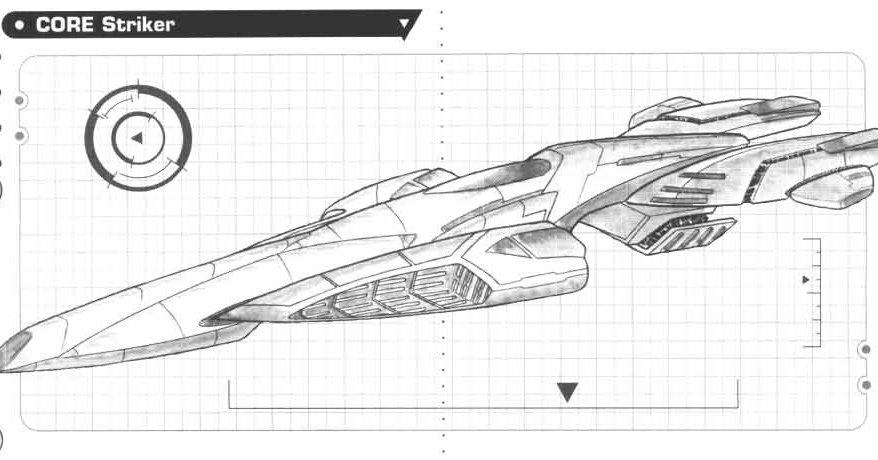
The standard fighter used by n00b agents to get around. With 20 crewmen (with about 40 sentient computers to help, or 4 super computers. Who knows), a length of 500 m and plenty of room for lounges and several passengers, it's a larger, more comfortable Defiant from Star Trek.
It's armament consist of two linked plasma busters (written as a single weapon entry) pointing forwards, smaller plasma emitters for full 360° coverage, and two force screens (the stronger one pointed forwards, the other one can be rotated around, or at least that what the fluff says. It actually covers the whole ship all the time), with possible extenion modules including missiles or a drone hangar base (non of which has any writeups). The plasma busters are particularly nasty as they have the Disintegrator perk, insta-killing every vehicle that suffers light damage (aka the total damage is at least equal to the target's base armor), and even if no damage is actually dealt, armor will be reduced by a good amount. It basically treats the armor rating like hit points.
This is also the only real way those plasma emitters could do anything against a fellow Striker, as a damage multiplier of 10 versus a base armor of 60 just isn't cutting it. What are they even supposed to be fired at? I don't think anything you can damage with those emitters could actually manage to hurt you.
The OGL version is much worse, with the plasma emitters 10d4 having no chance to scratch that hardness of 60 outside from a crit and a very lucky roll (even then, the thing has 200 hit points). The plasma busters don't disintegrate, so their 10d12 is a tad bit underwhelming.
CORE Pathfinder
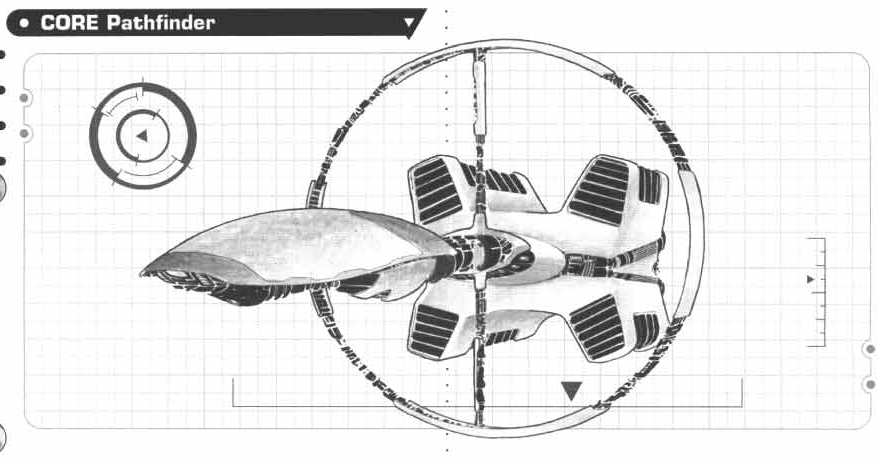
A medium-sized (at just 10 km length) exploration vessel, meant to go were no man has gone before and look out for D'vor/Not-Tyranids. Despite this here only being the science variant, it is equipped with a wave motion gun (the "starblade launcher") with which it can disintegrate any similar vehicle and below in a wide area (damage 25 vs armor 15, or damage 2,500 vs Large-scale ships). As its plasma emitters have a damage multiplier of 10, they are actually balanced to be used against itself.
Since the writeups here - unlike every other SilCORE line - don't have a column in the weapons list to denote the quantity of each weapon system, they have to give each individual weapon its own entry. As this Pathfinder has two emitters on each side, it has to list them twice.
Looking at this planet hit point table, a single shot of the wave motion gun could atomize our moon and turn Earth into an oversized asteroid - at the same time. 7 shots are enough to destroy our
sun
, and you can totally do all these shots in 1 turn. Truly a vessel made for science and exploration.
CORE Explorer
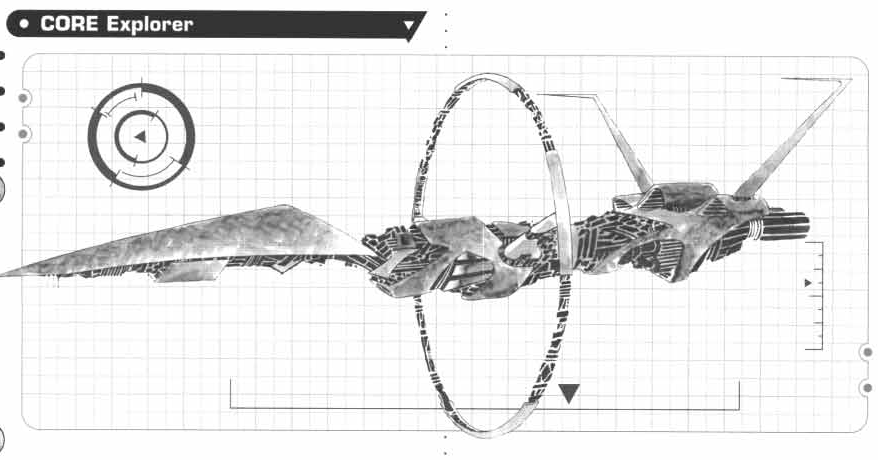
Pretty much like the Pathfinder, but twice as big. Same firepower (with additional emitters), much beefier. Despite claiming its wave motion gun is bigger than the Pathfinder's, they are exactly the same. With its armor rating of 40, it can actually survive a shot of that. But since its emitters still only have a multiplier of 10, we've returned to the Striker problem of only having one weapon that can actually scratch a comparable ship (though I guess those are primarily for anti-fighter duties).
Fighter
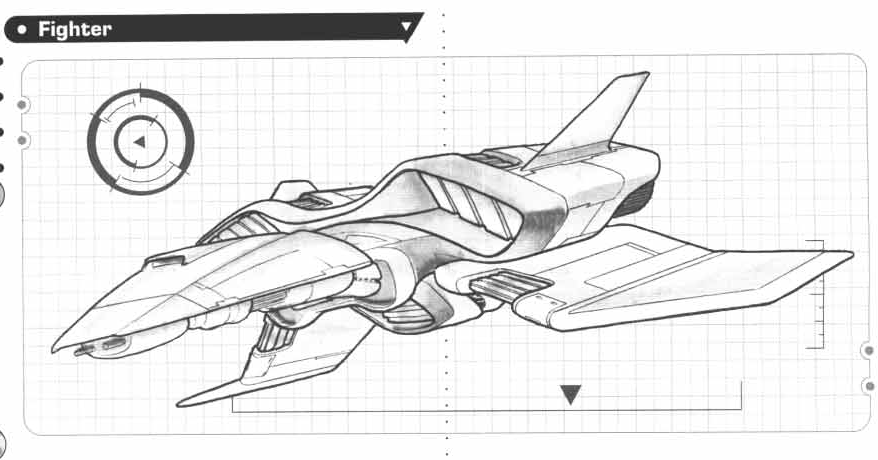
This cleverly-named fellow (seriously, this is the class designation) is the typical human fighter / small vessel. In fact, it is the
only
fighter / small vessel of its size and role humans ever build, because the design is supposedly so good it's all they ever need. Every human apparently knows how to pilot one, and even civilians cruise around in a Fighter. They're single-pilot ships (and can have up to 4 crewmen) with just under 200 m in length. Note how SilCORE's scaling doctrine also multiplies the crew (making this require a 10-man crew). They even repeat the scaling effects as "Design Notes" under pretty much every writeup here. Though I guess one can assume that the missing 9 guys are replaced by computers or something. The onboard AI apparently comes in all sort of personalities.
Like the Striker, the Fighter can't really do much against fellow Fighters, apart from the rail repeaters who can actually do damage thanks to their Armor-Piercing perk (though AP weapons can't directly destroy a vehicle). That is, if the force screen is down. But even with armor-piercing rounds, this main weapon can't hope to scratch a Striker, whose emitters are in turn a bit weak in mowing down Fighters.
There are also laser emitters, which are especially weaksauce.
Fighter-Bomber
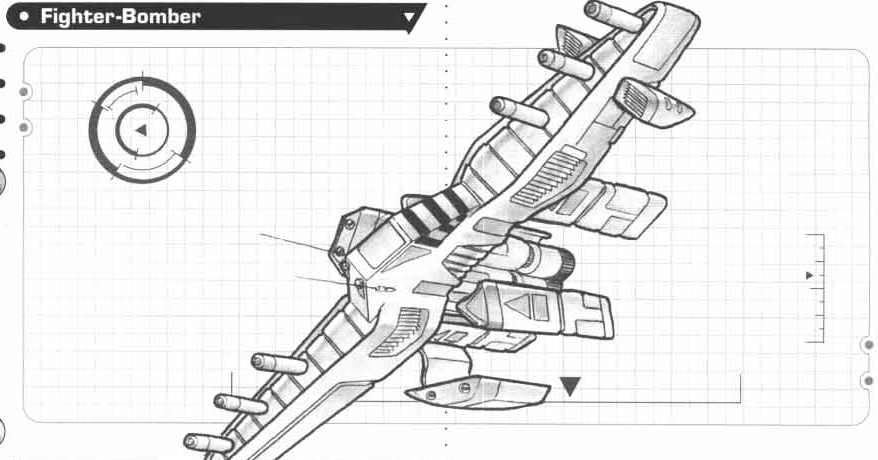
The bigger brother of the Fighter (man, the humans of this setting sure are creative), being exactly 200 m large. There's also this weird paragraph about how AIs from larger ships are always less human because size equals hypersentience or something.
It's overall a lot like a Fighter, though a bit beefier and with stronger weapons, namely heavy rail repeaters and positron missiles. These weapons seem to actually be scaled to damage comparable vessels, and missiles might even hurt the Striker (though there are only 4 missiles).
Frigate
(Who came up with these non-names?)
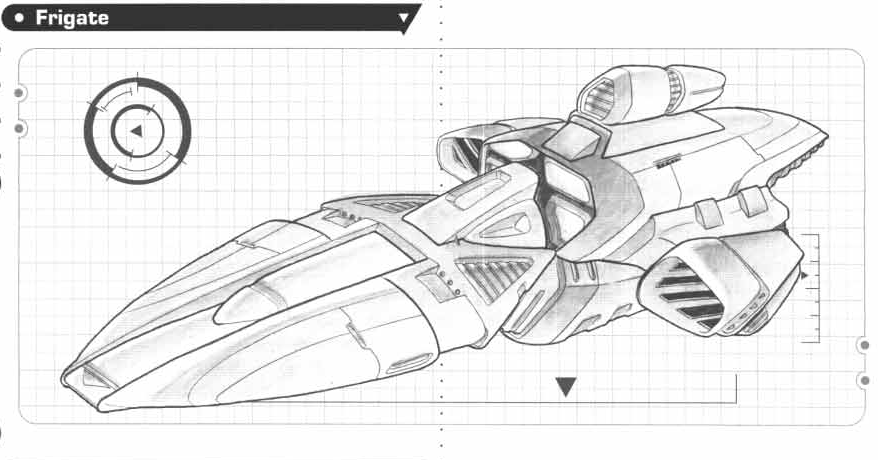
The Frigate-class... frigate, I guess, is the smallest human capital ship (2 km). We get two paragraphs worth of how about a capital ship's AI makes the ship some kind of giant robot, and the Frigate AIs are especially young and eager to prove themselves, used to essentially train crews for the older and more stubborn AIs of bigger ships.
Despite mentioning how groups of Frigates can "mass enough firepower to threaten much larger ships" making them "seldom ignored on the battlefield", groups of Frigates (who are apparently not even armored all that well) couldn't even threaten another single Frigate. Those ships just have the Fighter-Bomber's heavy rail repeaters and some plasma emitters. Damage multipliers of 15 and 10 respectively have no chance whatsoever of ever getting through that armor rating of 150 (even if you consider that the repeaters can burst fire all day long because almost every ship weapon has unlimited ammo). Worst of all is that they still count as being only on the Large scale, meaning the fluff assumes those heavy repeaters can do something against targets with effective armor in the
thousands
.
Let me make some quick calculations here:
-
To have a good chance at damaging another Frigate, you'd need to have a squadron composed of at least 2^19 aka 524,288 ships to get the rate of fire high enough to the point that concentrated burst-firing can potentially get some results.
-
Something like the Pathfinder would require 2^190 ships.
- As Armor-Piercing can neither overkill a vehicle nor actually reduce its base armor like normal weapons can (though to a far lesser extent than Disintegrator weapons), damaging the target doesn't actually become easier. In fact, it will most likely become harder as the squadron gets thinned out.
Destroyer (Seriously, what is this
 ?!)
?!)
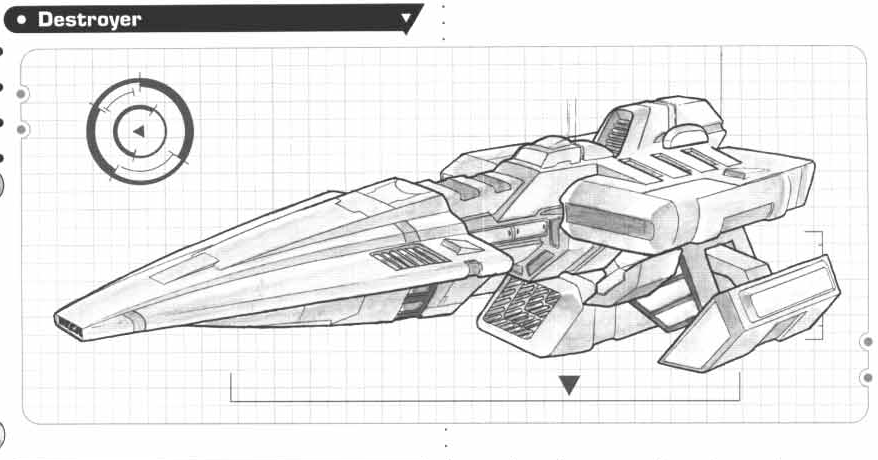
The Destroyer-class human destroyer is twice as large as the Frigate-class frigate. A versatile, sturdy design with AIs that are either grim veterans or promotion-driven AIs eager to get onboard full capital ships.
Weaponswise, it's just a Fighter-Bomber with more guns, and its armor is even higher than the Frigate. That's it.
(The OGL version has 350 HP, a hardness of 60 and weapons that deal 10d4 to 7d12 damage, making them significantly less durable. I sure hope the SilCORE scaling applies to the OGL writeups as well. Otherwise this ship would only be marginally tougher than the CORE Striker.)
Cruiser
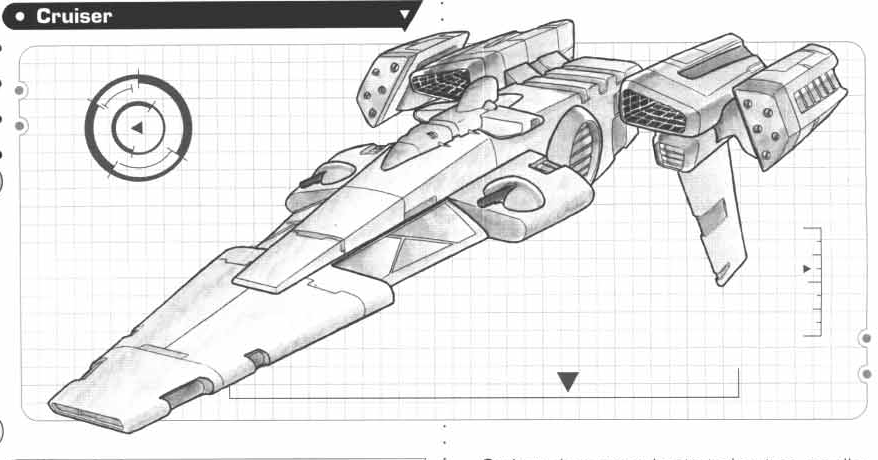
The human cruiser of the Cruiser-class is the largest human warship, racking in at 8 km. Cruiser AIs have been around for up to several thousand years, making them wise and experienced (and not totally outdated, apparently). We also learn that the older Cruisers started out as smaller ships that have been grown due to upgrades and such, making them unique from each other in design. This sounds pretty weird, to be honest.
In a sharp turn from the Frigate and Destroyer, the Cruiser is actually a bit overgunned, with every weapon actually being able to damage fellow warships (maybe aside from the laser emitters and heavy missiles, you need to soften the target up a little beforehand). Its heaviest weapons are a spinal railgun and a pair of railgun turrest, who probably designed for use against even larger/tougher ships thanks to their Armor-Piercing perk being a bit overkill for its own kind. It's definitely odd to have your biggest guns armor-piercing in SilCORE because as mentioned, these weapons can't really destroy anything apart from a lucky internal structure damage roll. Not that it needs those railguns against smaller vessels.
The writeup gives us the first time similar weapons are actually grouped togther in a single entry due to space restrictions. Progress! We also have the only hardpoint-weapon so far in the form of heavy missiles.
Kom'Sov Class-H Vessel
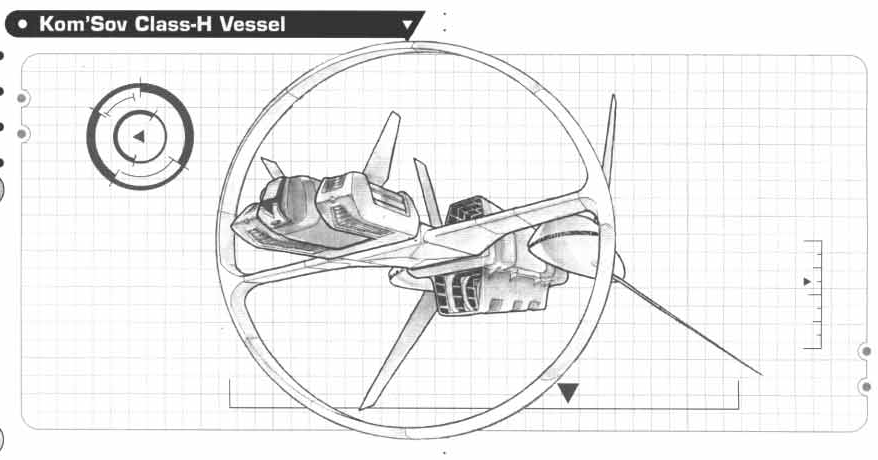
The Kom'Sov are an evil, insectiod race who design ships purely by function, which nevertheless ends up looking very pleasing to other races. I think CORE Command is trying to be the Hitchicker's Guide to the Galaxy here.
Despite their focus on efficiency, Kom'Sov ships are less powerful and versatile than human ships, with weak weapons and a rather dumb AI.
This Class-H ship is just 1 km long (making it Large scale like fighters), with 120 armor and a completely useless arsenal. Its heavy missiles can't hurt anything shown so far aside from a very heavily-damaged Fighter, and its strongest weapons are 2 flak turrets with pitiful range and only somewhat better damage. Having one of these duke it out with a Frigate would have them trade shots for hours before they just start ramming into each other.
Kom'Sov Class-K Vessel
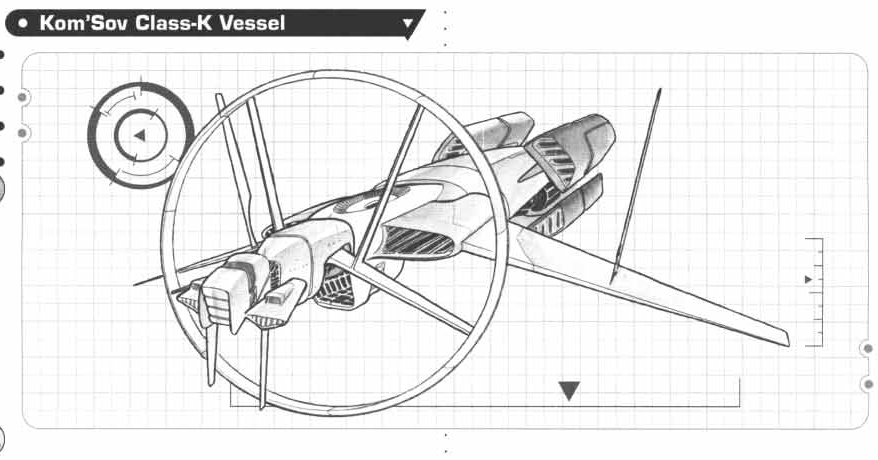
The largets Kom'Sov vessel, at a mere 2.5 km. Apparently, nobody in this setting builds larger ships directly, they just slap more stuff on smaller ones (which the Kom'Sov dislike doing). It's a slightly less useless upgrade of the Class-H.
Akhir-Class Fighter-Shuttle
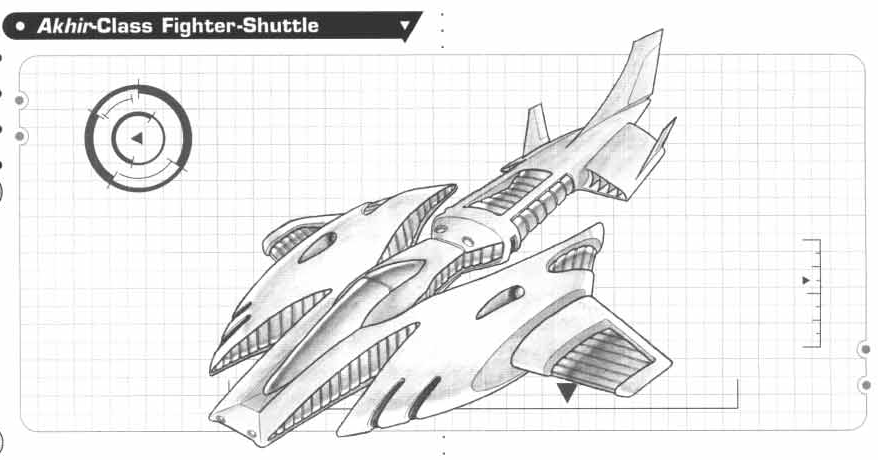
A small (475 m) Orb-Shakra ship, also used by Cyren. It only has one weapon (the "quad starblade"), but that one's a Disintegrator, so it is already better than any human fighter (even if it is only slightly more durable itself).
Rajefar-Class Striker
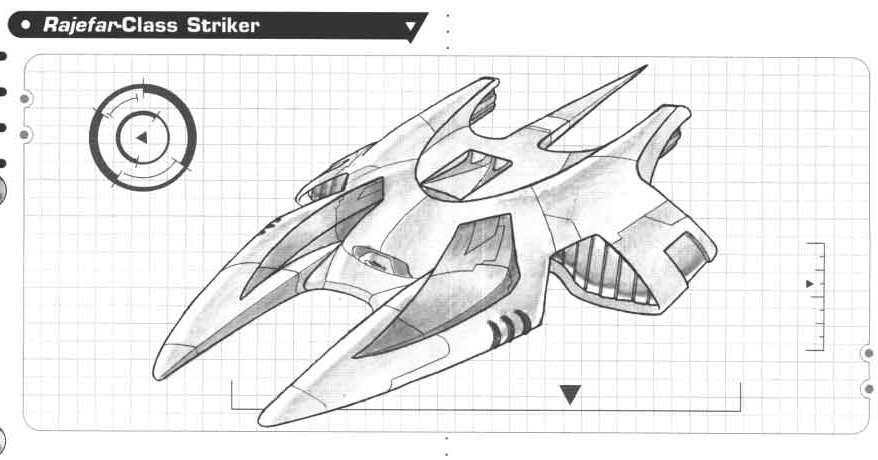
This 1 km ship was designed by Orb-Shakra, but is exclusively piloted by the Cyreen. And it falls right back into the "undergunned ship that can't scratch comparable ships and even has a hard time destroying smaller fighters"-routine. Its main powergun has the Haywire perk, but you actually have to damage stuff for that perk to have any effect. And they advertize this ship as being essentially a big gun with an engine.
Oh well, it has stealth, that's at least something.
Rajezeel-Class Destroyer
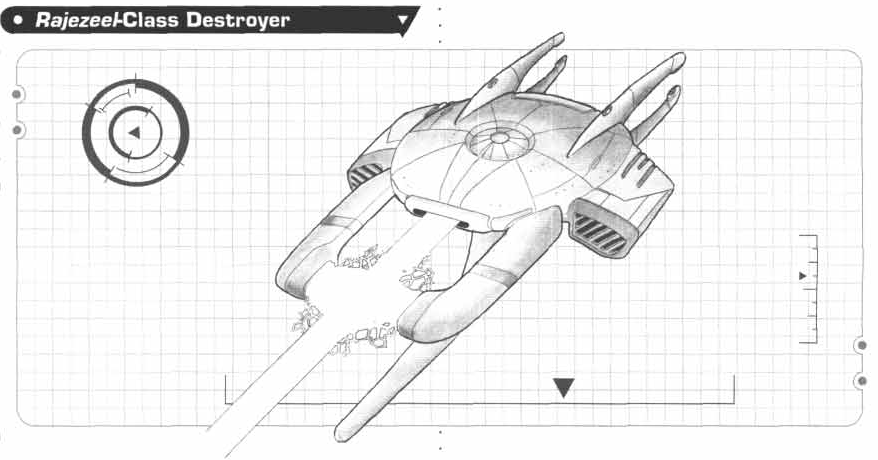
Used by both the Cyreen and Orb-Shakra (with the latter occasionally using these for non-military usage as big welding torches), this is another "gun with an engine" ship that is severly undergunned. It just has slightly bigger numbers than the Rajefar.
Zhazeen Multi-Purpose Cruiser
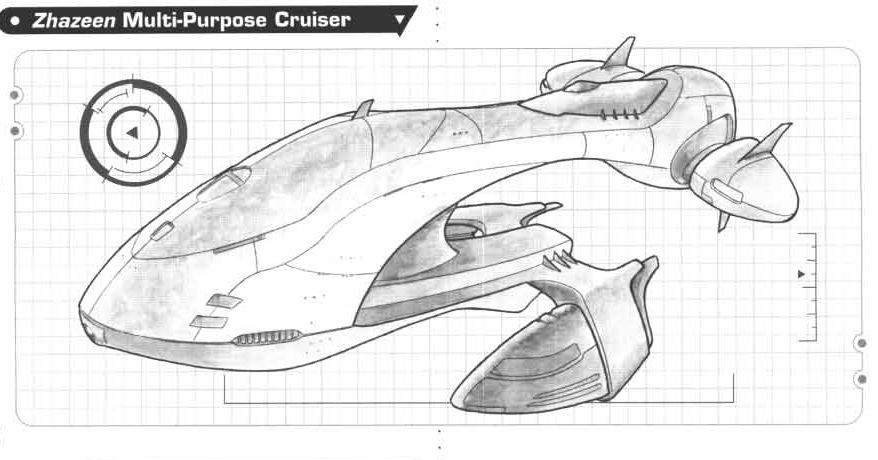
A pretty big - 15 km in length - Orb-Shakra ship usable for all sorts of missions, from trading to combat. And it's one of those few ships where the armor and damage value are sorta in balance. It also has a disintegrator wave-motion gun (why don't the striker and destroyer have one?). It's a bit weaker than the one used by CORE, so you need slightly more time to annihilate planets and suns.
Sithian-Class Shuttle
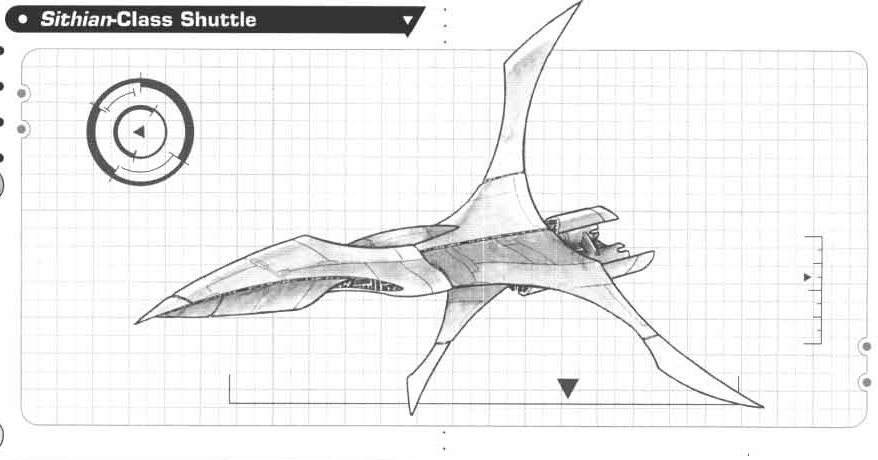
This muran ship is only 300 m in lneght and really only used for transport and stuff, because Murans believe combat is for big ships only. And it's pretty weaksauce, even though it can supposedly pack quite a punch.
Sciathan-Class Frigate/Transport
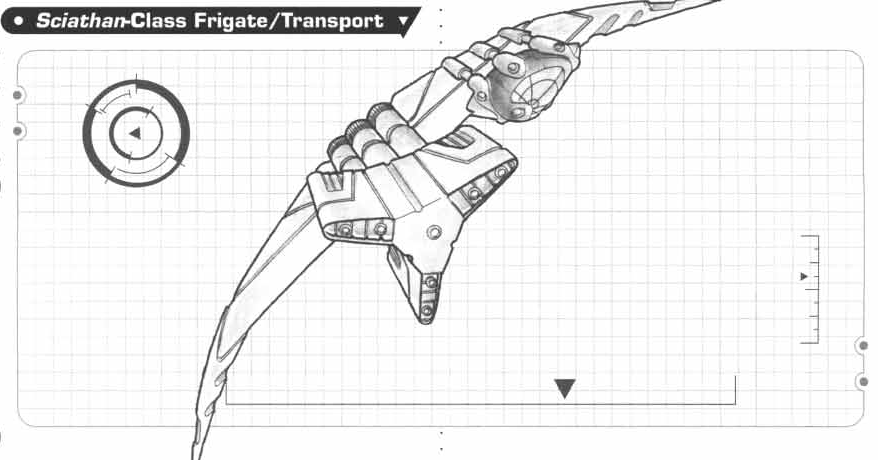
A 2 km long frigate that is just as disappointing as the human frigate. Though I guess having the main weapon able to set stuff on fire is a slight plus.
Cwelan-Class Destroyer
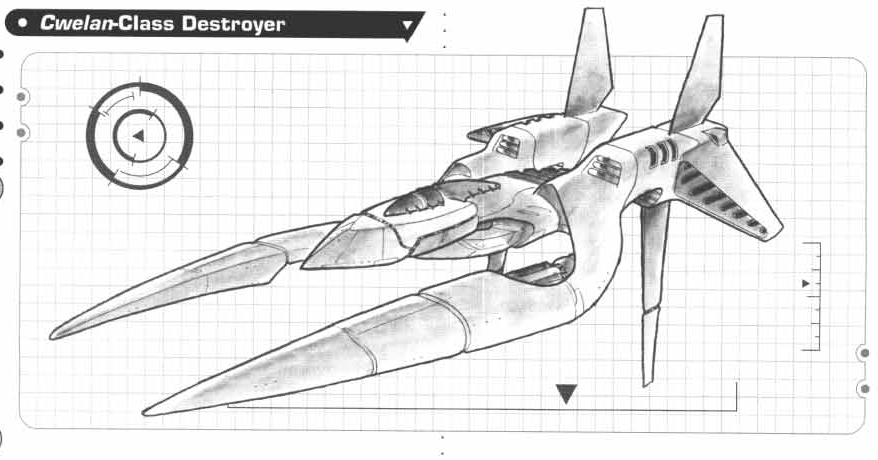
One of the newest Muran ships (aka less than a century old), with a length of 5 km. Some variants have stealth, and we a get a bit of fluff about how Murans and Orb-Shakra bicker about who should hand out its stealth technology first, with the Murans of course wanting to get the superior Orb-Shakra technology.
And just like with the humans, it's a mere upgrade of the frigate that suffers from the same problems.
Wyrcan-Class Cruiser
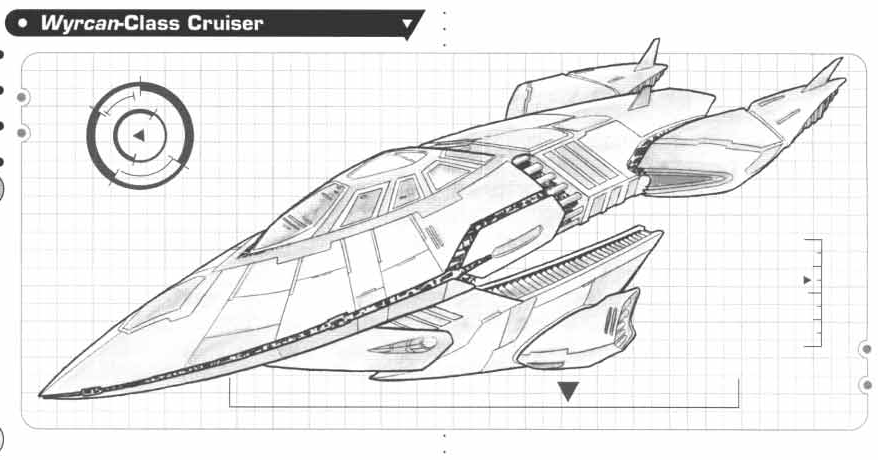
A 15 km (10 km according to the writeup stat block) Muran juggernaut that is compatible with CORE standards and even handed out to CORE agent crews (albeit with a crappier AI because Murans are xenophobes), leading to conspiracies about how the Murans probably have much more advanced ships held in reserve if they're so willing to give this one to xenos.
Games-wise, it's one of those rare ships that's actually a bit overgunned, only held back by the lack of a Disintegrator weapon.
Galactic Transport
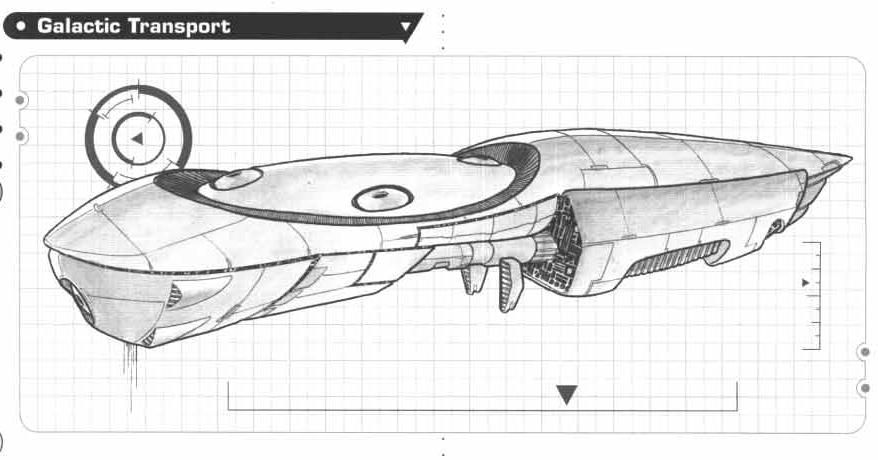
Your typical transgalaxic transport, measuring 100 km in total. They are able to cover 100 million light years in about 2 weeks, making it the fastest ship around for long distance travel (in fact a bit too fast considering the fluff talks about how getting from galaxy to galaxy can take months. You could travel from the Milky Way to Andromeda in like 2 1/2 days with this ship)
Not meant for combat, it's of course not very well armed (though it makes short work out of Large-scale vehicles). Its armor would technically allow it to shrug off up to 2 wave motion gun shots, but their abyssmal maneuver rating makes this very unlikely, as this is one of those games where damage gets mutliplied by your margin of success.
Broadsword Strike Ship
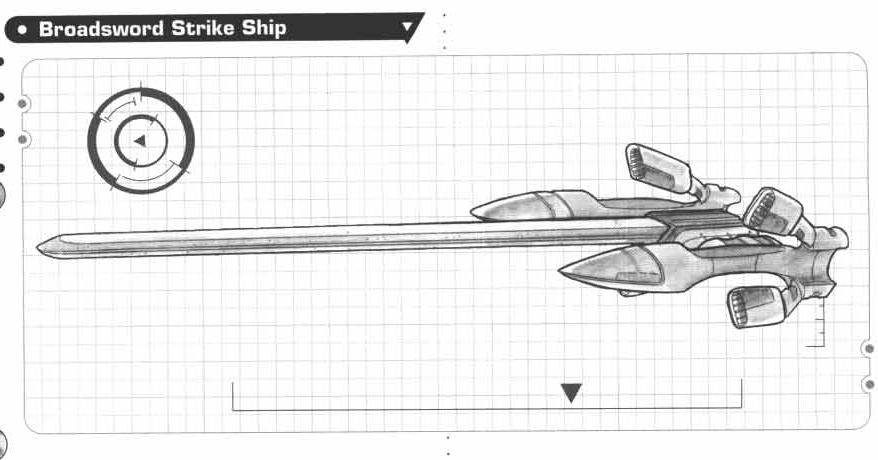
This CORE fellow is 1 km in length, largely thanks to the absurdly large particle accelerator that is certainly not compensating for something. This ship actually works as a "big gun with engines", able to damage most frigates (destroyers not so much) from a very far distance. It also has some backup plasma emitters, but those are extremely weak for some reason.
CORE Striker, Hunter Variant
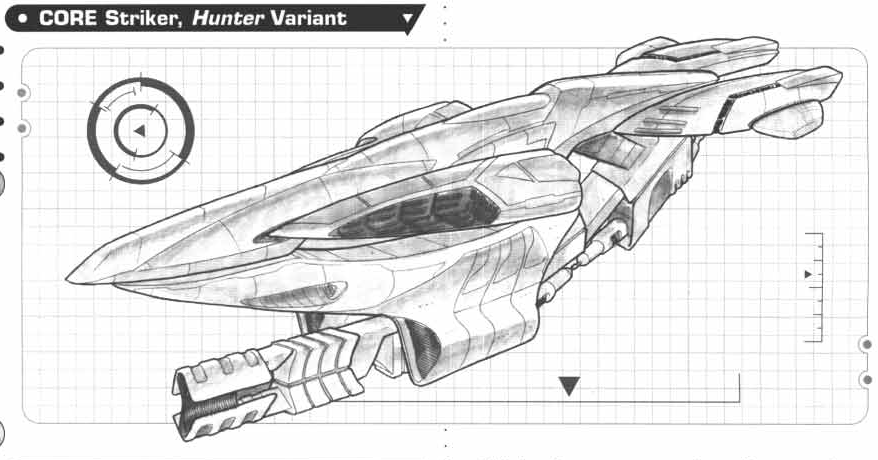
I think we're reach or passed the part where the Armory book stuff begins. This is a normal CORE Striker which traded its plasma busters for a huge singularity cannon, aka a black hole cannon. It has the same performance as the Broadsword's particle accelerator, but it trades the Haywire perk for the much better Disintegrator perk, making this overall a much better glass cannon and a straight upgrade from the base Striker (apart from worse maneuverability).
They are also used for orbital bombardment, with their scale thankfully making it unlikely to demolish entire planets in a reasonable amount of time. And at least the fluff is spot on this time by saying these ships can destroy entire cities.
And just like with the Strike Ship, the plasma emitters are strangely weak, especiall compared to a normal Striker.
Destroyer, Grenadier Variant
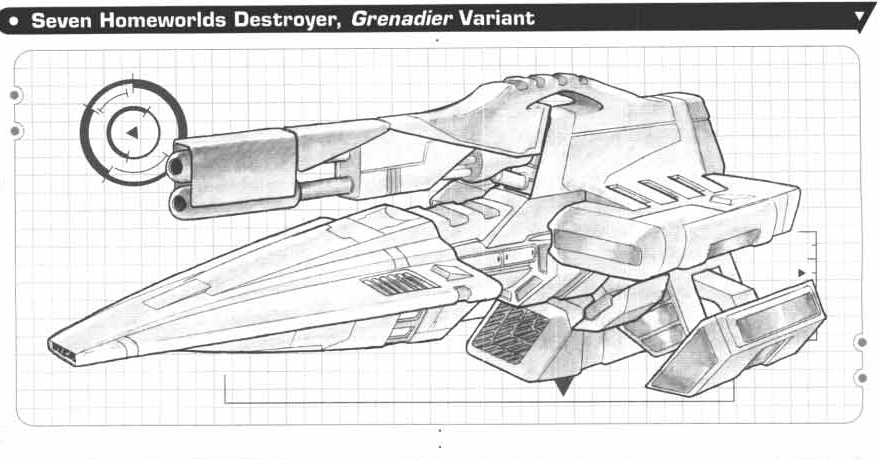
This model replaces the heavy repeaters with a big anti-matter gun. It deals the same damage as the particle accelerator and singularity cannon, but with a big area effect. It has however a shorter range and only 10 shots, as opposed to the unlimited ammo of the other weapons.
Frigate, Assassin Variant
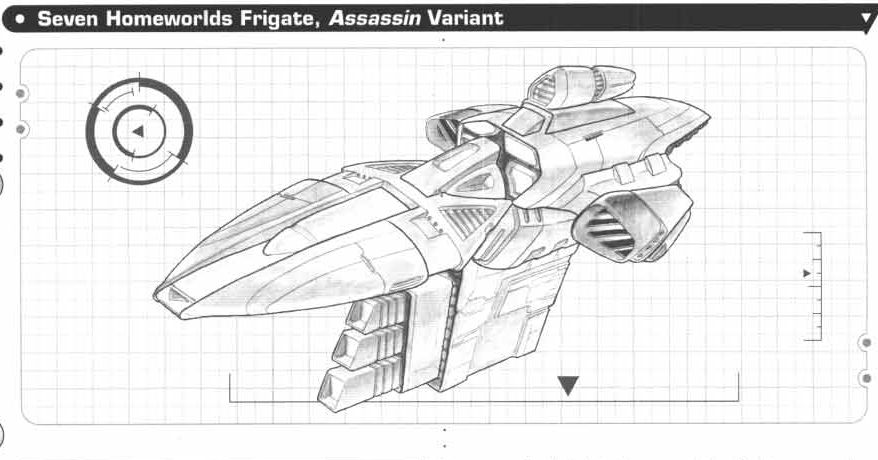
A Frigate armed only with a single phased disassembler battery, a Disintegrator weapon. It is comparable to the Striker's plasma busters, but it can burst fire. The problem is that it has a base range of only 1, meaning it can't hit anything that is 4 hexes away. Most other weapons can fire 5 or 10 times farther. Sure, this might work on much slower vessels, but those are usually in the next vehicle scale, multiplying their effect range by 100, so they shoot up to 1,000 times farther. Getting close to these behemoths would require an absurd zerg rush.
(I would also like to point out that SilCORE has this quirk where large-scale vehicle only get this effective range increase against vehicles on a smaller scale. Hex size and movement rates are unaffected, so a Gigantic-scale ship can apparently hit a small fighter from a much longer range than a fellow multi-km-vessel. I hope that's just supposed to mean larger-scale weapons cause so much destruction that they can damage smaller vehicles far beyond their efficient range by just aiming in the general direction and letting the free AoE do all the work.)
Onalan-Class Destroyer
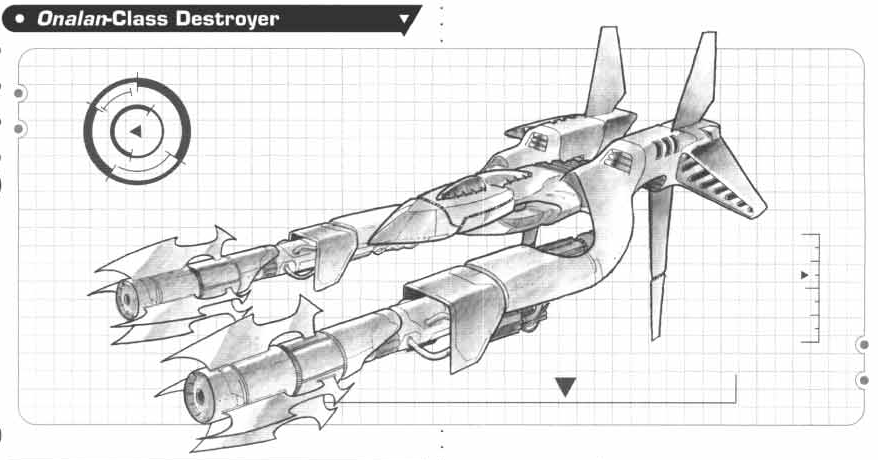
Continuing the trend of ship variants with ridiculously huge guns, this is a variant of the Cwelan-Class Destroyer with two giant ion accelerators. They're like the Broadsword's particle accelerators, except that they're much weaker and can only fire every 3 turns, which is pretty bad.
These writeups are a mess. Most ships can only damage much smaller targets, with the only exception being ships who have Disintegrator weapons. The only factions with access to these are CORE (who put that on pretty much anything), the Orb-Shakra (who strangely only use them on their smallest and largest ships), and the humans with that questionable Assassin Frigate. Speaking of humans: why is their naming convention so creatively bankrupt?
And let's not forget the absurd jump in scale from Large to Gigantic is absurd. SilCORE combat is actually kinda lethal, but only of your opponents can actually dish out enough damage, which the scaling prevents from happening. Without Disintegrator weapons, you'd need squadrons big enough to fill entire solar systems to put a dent into the largest ships, unless they've been heavily damaged before. Even then, a single other large ship can finish the job just fine.
Frigates and destroyers are in this weird limbo where their armor is somewhat between the scales, but their weapons still deal fighter-grade damage. SilCORE introduced an intermediary scale with an errata, but I don't think they ever made official writeups with this new scale. Then again, you could probably wing it easily by just dividing frigate/destroyer armor by 10 and just put them on the new scale, effectively boosting all of their weapons and ranges by 10. Though there's probably a whole lot more you have to do to fix these writeups. I didn't even really bother with each ship's various other systems, though at least those don't seem to have many obvious issues.
A shame really. Apart from those "let's stick a big gun on it!" variants, most of the designs are kinda nice and the definite high point of this book.
(Though I could swear I've seen something similar to the Orb-Shakra ships in a video game or two, especially the Rajezeel and Rajefar)
Next time : Threats - let's see how the Not-Tyranids of this setting hold up to CORE's wave motion gun onslaught.
Threats & Gamemastering
Original SA post CORE Command Player's Handbook Deluxe Edition
Chapter 5+6: Threats & Gamemastering
Not everyone's friendly in the five galaxies, so CORE has classified potential threats into one of four categories, from Category One for galaxy-wide threats (so far only used for the D'vor / Not-Tyranids) that will get the attention of every CORE agent available all down to Category Four for planet- or star-system-wide threats that are just barely dangerous enough for CORE to get their hands dirty. CORE has so called watcher arrays (aka large satellites / sensor arrays) operating all over the five galaxies to warn of any threat.
The D'vor
So who exactly are the D'vor? And what do they want? Well, nobody really knows, as nobody has ever actually seen a D'vor (though rumor has it they're made out of energy or something). Despite the lack of any concrete information, we apparently do know that they're nihilists bend on destroying the universe in order to rebuild it in their own image.
When people speak about D'vor attacks or invasions, they're speaking about their artifact fleets (Not-Hive-Fleets), composed of their autonomous, biomechanical creations (the actual Not-Tyranids). As these fleets ignore fellow nihilists/antagonists (not sure how they can determine that), these fleets tend to carry around giant space parasites and brigands.
There's a short bit about how the artifact fleets might be ancient doosmday devices following their last order, like what you see in every other episode of Star Trek TOS.
FTL-capable D'vor ships are a bit unique compared to the other ships. They can cover 100,000 light years per jump (10 to 100 times as far as pretty much every military ship so far), but they only move at 100 - 1,000 times the speed of light (10 to 100 times slower ). They certainly don't lend themselves to sudden strikes. And since they all need 1 minute to charge for a jump (during which they can't do anything), attacking them at just the right time is pretty nasty for them.
I'm also not sure how well that meshes with their pretty low deployment range of 500 hrs. Sure, they have no fuel, but they still need some kind of maintenance according to RAW.
Star Devourer
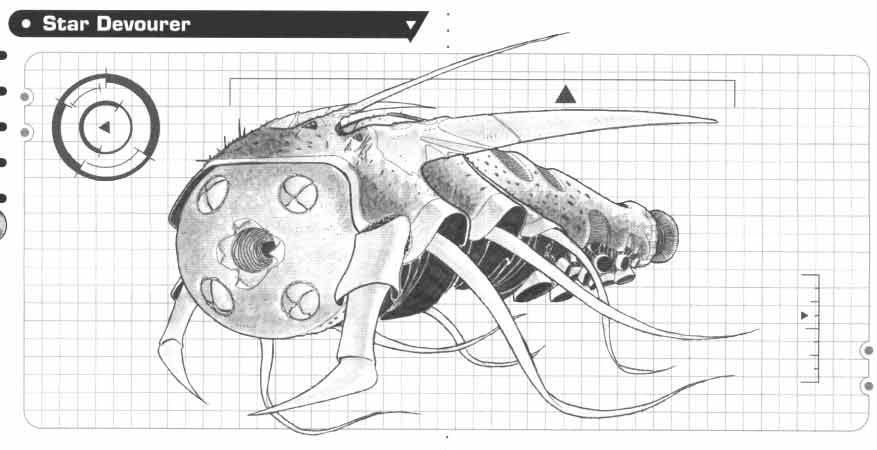
This Lovecraftian fleshlight (which is supposedly designed to be "deliberately menacing in appearance") is one of the largest D'vor ship around at 1,000 km. There are even bigger ones, but they only appear in the bestiary. As their name implies, they love nomming stars, with every 2-3 meals allowing them to produce a little baby Star Devourer. A good chunk of the nommed energy is "used to destroy the sub-space bridges and pillars that hold together the physical underpinnings of the universe". Nomming all the stars will apparently cause the entire universe to collapse.
A Star Devourer devours stars with its star cutters, disintegrator weapons that are weaker then CORE wave motion guns, have horrible accuracy and a rate of fire of -10 (aka 1 shot every 10 turns). Their only real use this weapon has in combat is to destroy smaller-scale vessels thanks to the free AoE. It's a bit sad if the good guys have the superior doomsday weapons.
Their weapons of choice for actual combat are their defensive dischargers, which follow the old tradition of only really doing something against smaller-scale craft. They can't really do anything against fellow Gigantic-scale ships, though their force screens and beefy armor rating of 150 means they'd need disintegrator weapons to do anything (which CORE of course has in spades).
Hunter-Killer
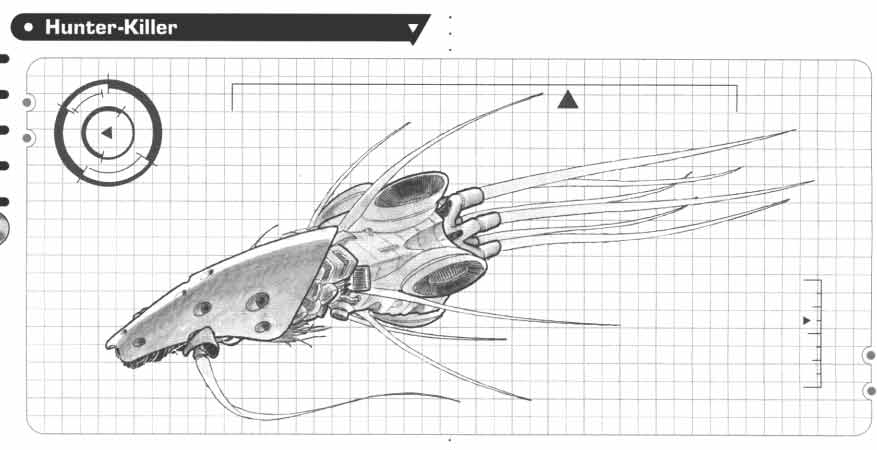
These 5-km-long flying phalluses are the trolls of the artifact fleet. They love playing games with their prey and create ambushes for them. And they love hanging out around red dwarf stars for some reason.
Weapons-wise, they have a weaker (but otherwise identical) version of the Star Devourer's disintegrator weapon (this one called "plasma launcher"). Other than that, they have electro-dischargers and micro-missiles that are absolutely useless against other Gigantic-class vessels apart from ones that are close to explode on their own.
This overlaps with their fluff quite strangely. On one hand, they actually can "deliberately seek out vessels larger than themselves" (as they are much more numerous than Star Devourers, they can cancel out their disintegrator weapon's lousy ROF with sheer numbers), on the other hand they prefer to "disable them while inflicting a minimum of visible damage" so they can use the wreck to send distress signals for more ambush fun. This probably refers to their haywire-causing electro-dischargers, but as stated above, they can't actually disable such a large ship on their own. They'd need to soften it up with their disintegrator weapons, which most likely do ensure a lot of visible damage as they blow huge chunks out of the target's armor rating. Not to mention that using disintegrator weapons on heavily-damaged ships has a good chance of vaporizing them completely.
Gatherer-Breeder
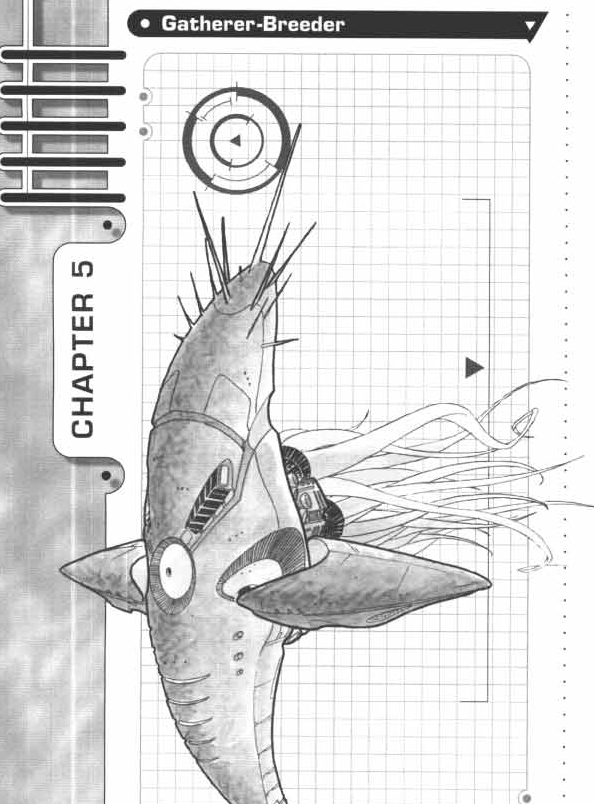
Just as big as the hunter-killer, but meant for cargo and support roles. They use nano-processors to built every other D'vor ship aside from Star Devourers (and the bigger ships not found in this book I presume), as well as planetary invasion troops. In a RTS game, the D'vor would be the funky alien race with mobile construction "buildings".
As they're not meant for combat, they are obviously weaksauce in the combat department. They do get props for including a laboratory and a workshop (which I guess represent the nano-processors).
Skod
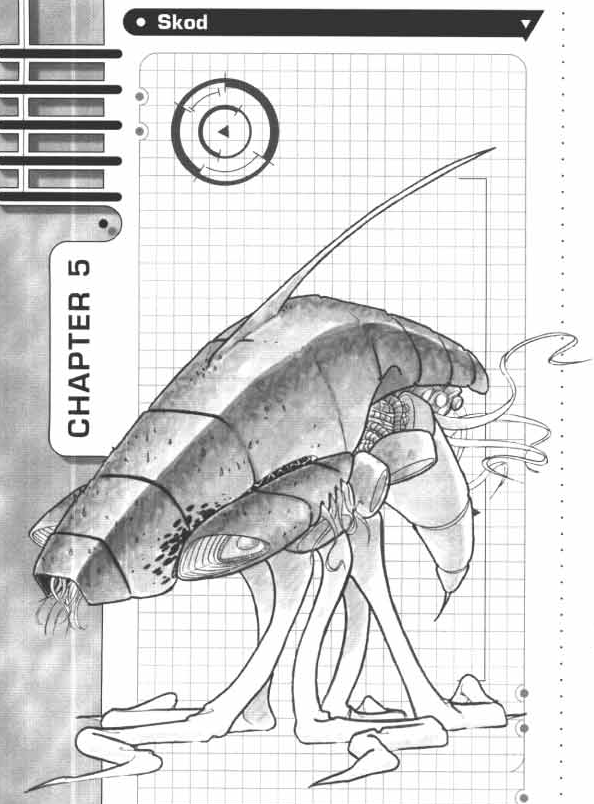
Moving to normal-scale vehicles (at 15 m long), this fellow is a combination between a fighter and a tank. They're sorta between a Recorded Hero Type II and III in terms of defense, with much faster flight movement. Their plasma cannons are like automatic buster pistols, making them the perfect opponents for a round of rocket tag.
Kra'ab (I see what you did there)
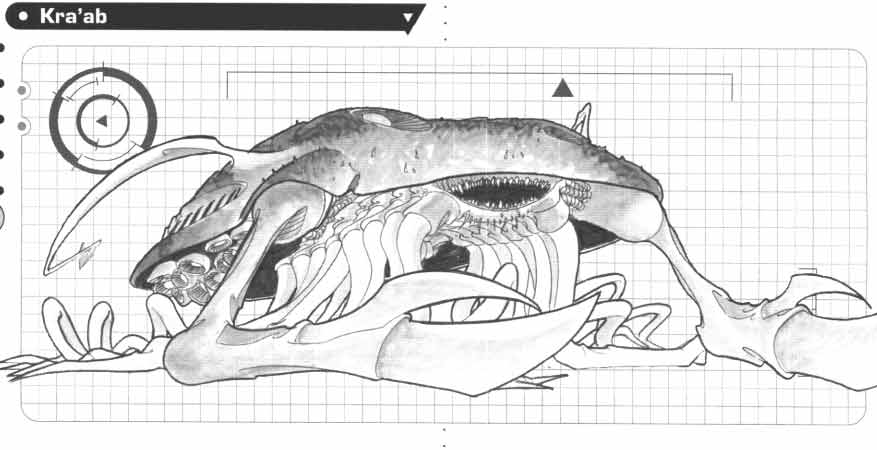
"What's up, guys?!"
This has to be the jolliest giant enemy crab I've ever seen. I want him as a plushie!
Ahem, with 25 m in length, a more sluggish pace and armor surpassing that of a tank, these guys are your heavy assault units. They have plasma bursters for indirect fire (though their range is too low to really take advantage of that) that are not quite as good as the Skod's cannons, and some vicious mono-claws for close combat. These ones are pretty darn dangerous for CORE agents - at least before they can get their hands on that overpowered bazooka.
(The only other personal-scale combat vehicle presented in this book is the battlepod, which is somewhat inbetween these two D'vor "vehicles" in terms of durability, with the same kind of offensive punch.)
Hunchback
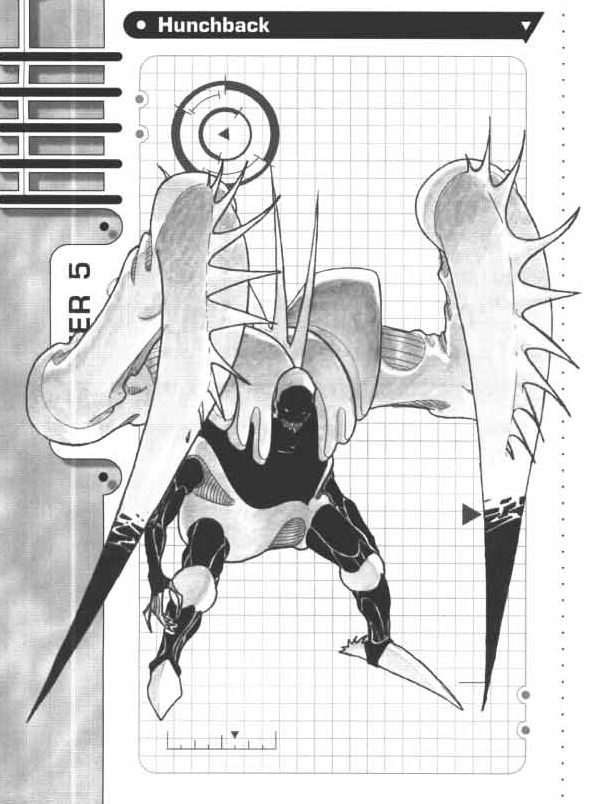
This 3-m-tall (or rather 4 m according to the writeup) Not-Carnifex really doesn't mesh well with the previously shown D'vor designs. They're the D'vor shook troopers, able to slice people up with their massive claws or shoot them with guns they've picked up (it's never said if the D'vor create their own guns, and the writeup has no example loadout). The fluff claims they have to breathe and are therefore vulnerable to toxins, but they have the same set of Hostile Environment Protection as every spacecraft, so they're just fine in space.
Aside from being much smaller, they're only minimally less durable than a Skod, and they're claws are pretty mean. CORE agents truly are glass cannons.
Seeker
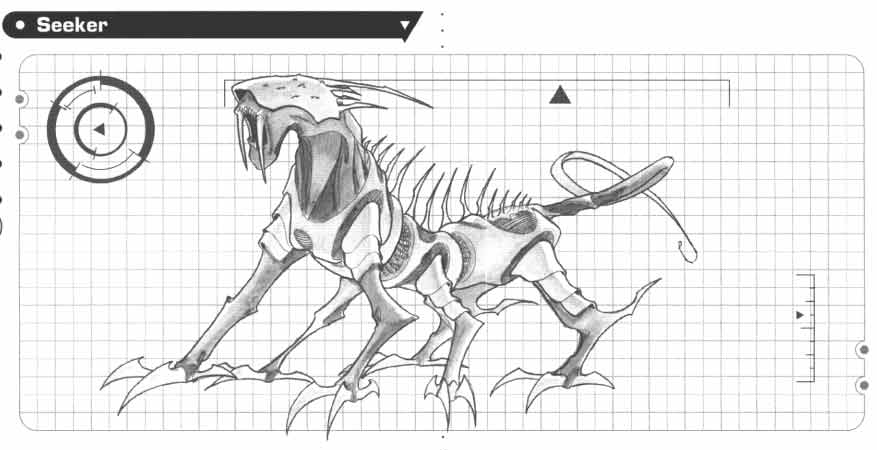
Now this thing just looks like local wildlife. These are the 3-m-tall scouts of the D'vor. They're also pretty dangerous glass cannons, as they can't take much damage, but their mono-claws somehow deal as much damage as the hunchback's much bigger ones.
Yeah, unless you're a Recorded Hero, personal combat with these D'vor guys can get ugly fast. Thankfully, they have no ranged weapons and can't fly, so pimp yourself with some anti-gravity bones.
Kabayans
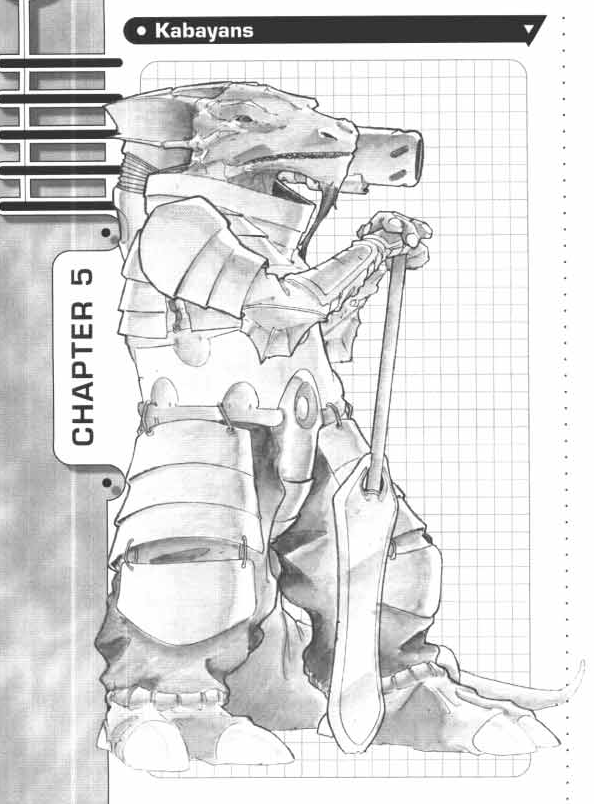
Kabayans are tall space kobolds who cruise along artifact fleets in order to raid destroyed colonies for loot and technology (as they're too impatient to do make much of their own). They can hear D'vor ship comm signals as beautiful music, which causes them to worship the D'vor. All in all pretty jerkish.
Statswise, they can be pretty beefy, but their mental attributes suffer for it.
Grob
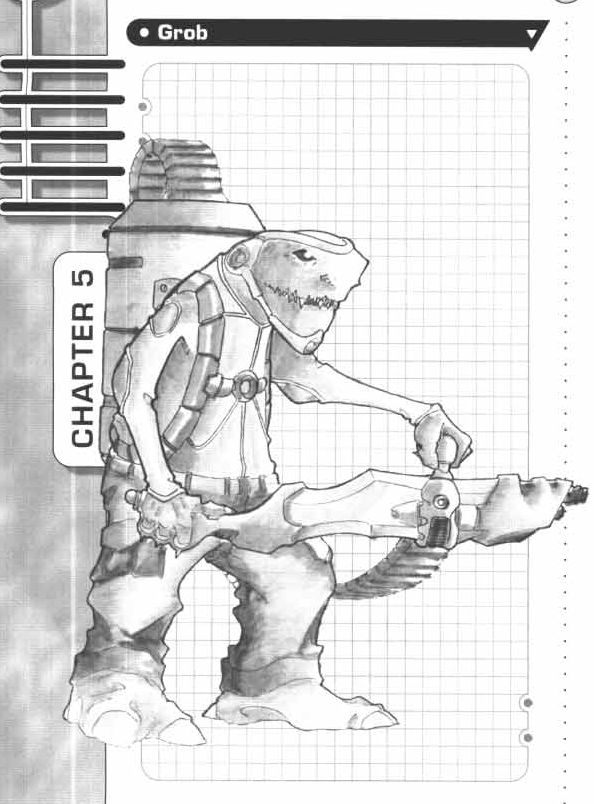
Grob are like goblins or something. Small pests that travel as tribes to pillage planets and generally cause mayhem. They love huge guns.
They're pretty agile, but not the strongest guys around.
Kom'Sov
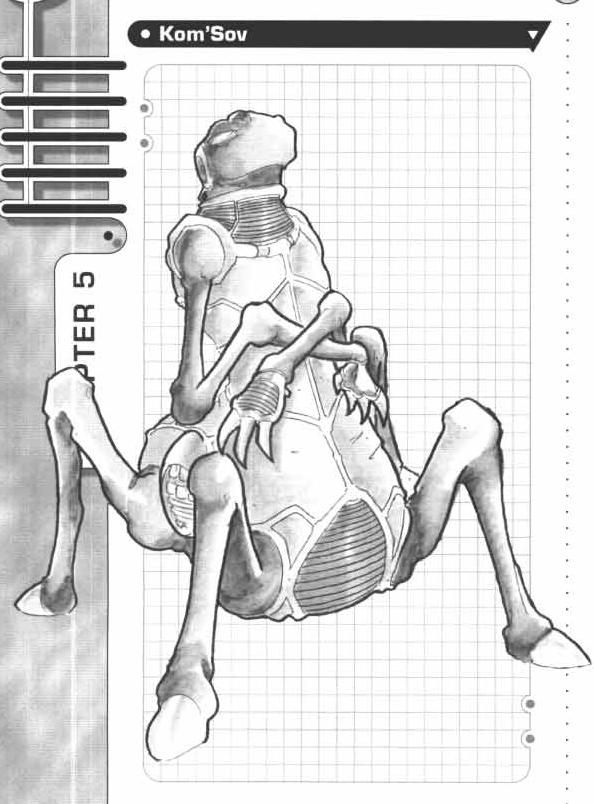
Weird insectoid dudes without a real face who are probably the most advanced of the lesser antagonistic races in terms of their own technology. They might come across as having a hive mind of sorts, but they're just very extreme space communists who value the Greater Good over the individual.
The are pretty good in terms of agility and willpower, but they blow at being charismatic.
And that's pretty much it. There's a 6th chapter about Gamemastering that basically amounts to generic GM advice with a random adventure generator as seen in Jovian Chronicles (except this one goes on for way too long).
At the end of that chapter is also the shocking secret of CORE Command's backstory:
Fractal - CORE's Zordon planet ship computer thing - is Earth. The original humans reached Singularity status and began calling themselves Tranz for some reason (probably to make it even harder for players to uncover this mystery). It was ironically only at that time they found out that there are other intelligent lifeforms in the universe, with the message being delivered by one of their now ancient probes (V'ger?) that has finally returned.
As they sent automated FTL scouts all throughout the universe and pimped out Earth into Fractal, the humans/Tranz slowly faded into a higher plane of existence, with Fractal acting as their only anchor to this world. The original Compilers were servitors created to keep Fractal running.
When Fractal encountered the D'vor for the first time, it just wanted to say hello and got promptly attacked. Fractal managed to escape, but all the Compilers were wiped out, and Fractal itself took quite a beating from which it never really recovered.
It was then that the humans/Tranz discovered the D'vor were actually higher state beings like themselves, using their artifact fleet to restart the universe. Not wanting this to happen, the humans/Tranz did the obvious thing: Get some Mi-Compilers, populate the Milky Way with a new breed of humans and hope they will found something like CORE in a couple millenia before the artifact fleets become to numerous. I'm pretty sure there were a couple possible solutions that would've been less time-consuming.
So there you have it. CORE Command: overpowered guns, balance that's all over the place, ship writeups that don't work as intented, and a setting that's barely even there. I'm sure nobody expected Heavy-Gear-quality of world building on a cosmic scale, but what we get here is barely above an introductionary booklet, and the only other product with further fluff is the bestiary.
Now I need something more fun and optimistic as a palette cleanser. Next time: Another fighting roleplaying game. Will this one have a less ridiculous tier list?